#threat taxonomy
Explore tagged Tumblr posts
Text
Threats of Artificial Intelligence for Cybersecurity
Sfetcu, Nicolae (2024), Threats of Artificial Intelligence for Cybersecurity, IT & C, 3:3, ppp, Abstract Artificial intelligence enables automated decision-making and facilitates many aspects of daily life, bringing with it improvements in operations and numerous other benefits. However, AI systems face numerous cybersecurity threats, and AI itself needs to be secured, as cases of malicious…
#algorithmic biases#artificial intelligence#black boxes#cyber security#cyber-attacks#Cybersecurity#threat actors#threat modeling#threat taxonomy#threats
0 notes
Text
Giant Emerald Pill-Millipede: when these enormous millipedes are all rolled up, their bodies can be as big as a baseball, a tennis ball, or a small orange

This species (Zoosphaerium neptunus) is commonly known as a giant emerald pill-millipede. The females can measure up to 90mm long (roughly 3.5 inches), making this the largest species of pill-millipede in the world.

There is a significant degree of sexual dimorphism in this species, with the males measuring only about 45mm (1.8 inches) long -- roughly half the size of the females.
Giant emerald pill-millipedes are found only in Madagascar, which is home to several endemic species of giant pill-millipedes (order Sphaerotheriida). The Malagasy name for giant pill-millipedes is "Tainkintana," which means "shooting-star."

Pill-millipedes use conglobation as a defense mechanism, which means that they can curl their bodies up into a spherical shape so that their dorsal plates form a protective shield around the softer, more vulnerable parts of their bodies, just like an actual pill-bug or a "roly-poly."
When they roll themselves up completely, they look almost like gently polished chunks of malachite, emerald, or jade.

Giant emerald pill-millipedes will sometimes form large swarms that travel together as a group. This is the only species of giant pill-millipede that engages in any sort of swarming behavior, and the purpose of that behavior is still unclear. The swarms often contain thousands of individuals, with almost all of them moving in the same direction, even when there is no physical contact that might allow the millipedes to "herd" one another along.
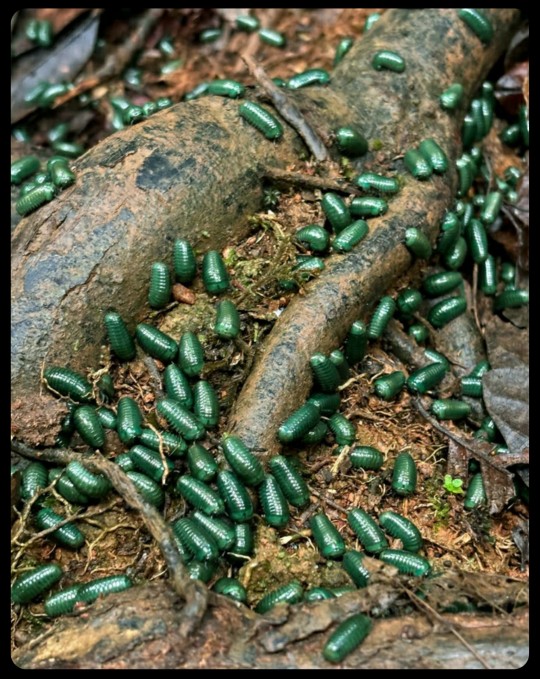
Their swarming behavior also has some very peculiar features, as this article explains:
During swarming, Zoosphaerium neptunus individuals pay little attention to their surroundings; many specimens were observed walking straight into and drowning in small puddles. Some swarms even display ‘cliché lemming behaviour:' in Marojejy, a large part of a swarm walked into and drowned in a small river.
No single specimen was observed walking ‘against the current,' all specimens were moving in the same direction (southeast), even when not in contact with one another.
Of 273 randomly collected individuals, 105 were males, while 168 were females. The males were 8.3 - 14.1 mm wide (average width 10.4 mm). According to the inner horns of the posterior telopods, all males were sexually mature. The females were 9.95 - 15.4 mm wide (average width 11.4 mm). All females displayed non sclerotized vulvae and were sexually immature.
Some researchers argue that the swarming serves as a defense mechanism, providing a layer of protection (or at least some cryptic cover) against local predators, but the swarming behavior is still poorly understood.

Important Note: I just want to remind everyone that these animals belong in their own natural habitat -- they should not be trapped, bought/sold, traded, shipped, collected, or kept as pets. This particular species does not survive well in captivity, either, and the demand for these "exotic" invertebrates is putting the wild populations in jeopardy. The previous article discusses those issues, too:
Another possible threat for Z. neptunus swarms are collections for the pet trade. There exists a large demand in Japan, Europe and North America for 'green -eyed monsters’ as pets. Giant pill -millipedes from Madagascar unfortunately have a very short survival time in terraria. The species is specialized on low-energy food (dead leaves), and adapted to the cool climates (<20°C) of the highlands. Specimens in terraria often starve to death quickly.
So I know that they're adorable and really, really fascinating...but let's just let them be their chunky, adorable little selves out in the wild where they belong.
Sources & More Info:
European Journal of Taxonomy: Seven New Giant Pill-Millipede Species and New Records of the Genus Zoosphaerium from Madagascar
Madagascar Conservation & Development: Swarming Behavior in the World's Largest Giant Pill-Millipede, Z. neptunus, and its Implication for Conservation Efforts
Bonn Zoological Bulletin Supplementum: The Giant Millipedes, Order Sphaerotheriida (an Annotated Species Catalogue) (PDF)
African Invertebrates: Madagascar's Living Giants: Discovery of Five New Species of Endemic Giant Pill-Millipedes from Madagascar (PDF)
#arthropods#giant green pill-millipede#zoosphaerium neptunus#myriapods#diplopoda#millipedes#island gigantism#entomology#evolution#malagasy#cool animals#bugs#insects#animal facts#madagascar#pill-millipede#pill bugs#but not really#Tainkintana#conglobation#swarming#conservation#giant emerald pill-millipede
10K notes
·
View notes
Text
can't stop thinking like this when i see posts

"three types of animals defined by utility and simplified transactional relationship to humans. including categories of productivity, domestic companionship, or passive/threat/disgust/pest":
British and colonial American institutional and folk taxonomy of "the natural world" in the eighteenth century. The unofficial-but-still-influential way of imagining animals in "utilitarian" ways that support material accumulation and colonial "productive land" and "land improvement." Like a secularization of previously explicitly-religious "great chain of being" schema but adapted for Englightenment-era scientific cosmology that reifies racialized imaginaries of environmental space and reinforces class/racial/species hierarchies with technical expertise.

"we have to do something about the distances":
Britain and the United States in the nineteenth century trying to control the globe and conquer "frontiers" and obsessively trying to more quickly and efficiently move trade, industrial products, information, communications, administrators, indentured laborers, and imperial military across seas and vast distances to cement hegemony by utilizing technical expertise with railroad networks, sailing ships, steamships, investments in cartographic surveying, latitude/longitude establishment, canals, and elaborate systems of telegraph lines.

"they should make a big heavy machine beast that can pull tons of black iron across grasslands and such":
British Empire technicians, Canadian administrators, and their US advisers from 1900-1930-ish when the Canadian "federal government also established breeding programs designed to cross cattle with bison or yak to create a new [ultimate] range animal" with "a reserve stock of pure blood bison of the highest potency" and an "enthusiasm for stocking northern [boreal and northern Great Plains] environments with exploitable game populations" when "nothing, in fact, captured the imagination of bureaucrats and private promoters in the early twentieth century more than the idea of importing domesticated reindeer from northern Europe as a the vanguard of a settled and prosperous agricultural civilization in northern Canada." And they partially pursued the project as "a response to the success of Americans" in "assimilating" the Inuit by importing 82,000 European reindeer to Alaska by 1916: "[A]n Alaskan Bureau of Education Report proudly proclaimed [...]: 'within less than a generation, the [slur] throughout northern and western Alaska have been advanced through one entire stage of civilization.'"
And in the same decade with British administrators in Southeast Asia, when they pursued the "purchase of elephants whose labour made possible the logging and transport of this harder-to-reach teak [in Burma]. By the period between 1919 and 1924, elephants represented the largest assets owned by the biggest timber firm operating in the colony […]. This animal capital, of around three thousand creatures, represented [...] the equivalent of roughly a third of the corporation's liabilities [...]. And these elephants must have been busy. This five-year period saw half a million tons of teak exported out of the colony, the overwhelming majority of which was exported by a handful of large British-owned firms. Their ownership of these beasts of burden gave imperial trading firms a considerable advantage."

"america will be a manufacturing nation once more , We're going to build great and terrible machines, so great and terrible they carve the land they walk on, the sun will set and it will rise and the forge will still burn and the hammer will still ring true folks"
Without comment:
[Quote.] [O]n the morning of February 20, 1915, [...] Franklin K. Lane, the secretary of the Interior […] intoned to the crowd, “The seas are now but a highway before the doors of the nations […]. The greatest adventure is before us, the gigantic adventure of an advancing democracy, strong, virile, kindly, and in that advance we shall be true to the indestructible spirit of the American Pioneer.” The fair did not officially commence, however, until President Wilson […] pressed a golden key linked to an aerial tower […], whose radio waves sparked the top of the Tower of Jewels, tripped a galvanometer, and closed a relay, swinging open the doors of the Palace of Machinery, where a massive diesel engine started to rotate. […] [T]he PPIE was organized to commemorate the completion of the Panama Canal […]. As one of the many promotional pamphlets declared, "California marks the limit of the geographical progress of civilization. For unnumbered centuries the course of empire has been steadily to the west." […] One subject that received an enormous amount of time and space was […] the areas of race betterment and tropical medicine. Indeed, the fair's official poster, the "Thirteenth Labor of Hercules," [the construction of the Panama Canal] symbolized the intertwined significance of these two concerns […] that crowned San Francisco as the Jewel of the Pacific. […] The construction of the Panama Canal unfolded against the backdrop of […] the installation of American colonial rule in Cuba, Puerto Rico, the Philippines, Guam, and Hawai’i. […] In San Francisco, […] this meant the presence of artifacts such as Fountain of Energy, a strong male mounted on horseback […] crowned by figurines of “Fame” and “Valor.” Referred to by its creator as the Victor of the Canal, this sculpture symbolized “the vigor and daring of our mighty nation […].” In his address titled "The Physician as Pioneer," the president-elect of the American Academy of Medicine, Dr. [W.H.], credited the colonization of the Mississippi Valley to the discovery of quinine […]. [A]t the Pan-American Medical Congress, where its president, Dr. [C.R.] delivered a lengthy address praising the hemispheric security ensured by the 1823 Monroe Doctrine and "the combined genius of American medical scientists […]" in the Canal Zone. […] [A]s [CR]'s lecture ultimately disclosed, his understanding of Pan-American medical progress was based […] on the enlightened effects of "Aryan blood" in American lands. […] [End quote.]
Source: Alexandra Minna Stern. "Race Betterment and Tropical Medicine in Imperial San Francisco." Eugenic Nation: Faults and Frontiers of Better Breeding in Modern America. Second Edition. 2016.
420 notes
·
View notes
Text
One of President Donald Trump’s cronies has heavily implied that Americans who demand due process for a Maryland father who was wrongly deported could meet his same fate.
On Tuesday, Trump’s senior director for counterterrorism, Sebastian Gorka, appeared on “Rob Schmitt Tonight” on Newsmax and said that those who publicly criticize Kilmar Abrego Garcia’s incarceration in a notoriously brutal prison in El Salvador could be committing a federal crime.
This is despite the Department of Justice admitting that Abrego Garcia, a Salvadoran national, was wrongly deported due to an “administrative error,” and the Supreme Court ordering the Trump administration to help to bring Abrego Garcia back to the United States.
“The taxonomy of American politics is dead,” Gorka said a little over two minutes into his interview. “It’s not left and right. It’s not even Republican or Democrat. There’s one line that divides us: Do you love America or do you hate America? It’s really quite that simple.”
According to Gorka, who was born in the United Kingdom to Hungarian parents, those who “love America” include Trump, his administration and his supporters because they want to “protect” the U.S..
Gorka then went on to describe those who “hate America” as anyone who opposes Trump and his administration’s actions by claiming they are “on the side of the cartel members, on the side of the illegal aliens, on the side of the terrorists.”
Gorka, a former Newsmax host, then dialed up the autocratic tone of his argument to an unsettling level.
“And you have to ask yourself, are they technically aiding and abetting them?” Gorka said of critics. “Because aiding and abetting criminals and terrorists is a crime in federal statute.”
The implication of Gorka’s threat wasn’t lost on social media users on X, formerly Twitter.
161 notes
·
View notes
Text
We sometimes treat avoiding Annoying Queer People as if it’s essential to the LGBTQ community’s self-preservation. We agonize over event descriptions and identity-based admittance policies, wondering how to discourage all the Annoying (and often, it’s implied, fake) Queers from attending without restricting any actual queers. (This always fails, because it turns out that actual queer people are humans, and therefore pretty annoying. And being annoying, by the way, is not a crime.) In order to fortify ourselves against Annoying Queers, we mock all their signifiers and regard them as massive social red flags: straight husbands, bolo ties, sexual inexperience, ukuleles, rainbow pins from Target, misconceptions about what hormones do, and Picrew avatars all somehow get treated with equal venom, no matter where they are coming from and why. The problem is, none of these traits tell us anything about how safe a person actually is to be around. Only observing their patterns of behavior can do that. By demonizing “cringey” and irritating attributes as the signs of a deep character flaw, we ignore the fact they tend to cluster among the closeted, questioning, or newly-out for a reason. When a socially isolated queer person in the suburbs feels that nobody sees them as they are, they might cover themselves in rainbow swag from the local big-box store to an ‘annoying’ degree. When a closeted lesbian teen hasn’t had the chance to form genuine relationships with LGBTQ people, all her reference points might come from shows like Our Flag Means Death and Heartstopper which yeah, might seem fangirlish and irritating to a more seasoned adult. When a profoundly repressed trans divorcee still believes the misinformation about hormones they’ve been fed by the press, they might repeat some downright offensive myths about pelvic floor damage or body hair being disgusting. This too, is incredibly exhausting to help someone process again and again. I don’t think any of us literally believe that the more irritating a person is, the more of a pressing political threat they are. But we behave as if we do. We devote huge amounts of time to complaining about the types of queer people that irritate us, and develop complex taxonomies for describing why they are so annoying and why defeating that annoyingness matters. This person is a tenderqueer, that one is a tucute, and in their style of dress and annoying mannerisms we can tell that they represent all that we hate most about ourselves and how we are seen. It’s easy for us to wind up directing more attention toward the queer people that annoy us than we do to our shared enemies. It’s not a good use of our time. It’s not good for our shared futures. And it’s all rooted in internalized shame.
I wrote about biphobia, acephobia, transphobia, and the troubling respectability politics of hating the "Annoying Queer Person." The full essay is free to read (or have narrated to you!) on my Substack.
870 notes
·
View notes
Text
Writing Notes: Hate

TRIANGULAR THEORY OF HATE
Typically hate is thought of as a single emotion.
But there is reason to believe that hate has multiple components that can manifest themselves in different ways on different occasions.
According to a triangular component of the duplex theory of hate, hate potentially comprises 3 components.
As with love, hate can be captured by both feelings triangles and action triangles.
Feelings may or may not translate themselves into actions, and actions may or may not represent genuine feelings.
People may interpret actions as meaning different things, depending on their mappings of feelings into actions and vice versa.
There are 3 components of hate: negation of intimacy, passion, and commitment.
Negation of intimacy - involves the pursuit of distance, often because the hated individual arouses repulsion and disgust.
Passion - expresses itself as intense anger or fear in response to a threat.
Commitment - is characterized by cognitions of devaluation and diminution through contempt for the targeted group.
The 3 components give rise to 7 different types of hate (plus non-hate), based on the particular combination of aspects involved:
Non-hate: No feelings of hate (none of negation of intimacy, passion, or commitment)
Cool hate: Disgust (disgust of negation of intimacy alone)
Hot hate: Anger/Fear (anger/fear of passion alone)
Cold hate: Devaluation/Diminution (devaluation/diminution of decision/commitment alone)
Boiling hate: Revulsion (disgust of negation of intimacy + anger/fear of passion)
Simmering hate: Loathing (disgust of negation of intimacy + devaluation/diminution of decision/commitment)
Seething hate: Revilement (anger/fear of passion + devaluation/diminution of decision/commitment)
Burning hate: Need for annihilation (disgust of negation of intimacy + anger/fear of passion + devaluation/diminution of decision/commitment)
THEORY OF HATE AS A STORY
The theory of hate as a story proposes that hate emerges from different kinds of stories. Some of the most common stories, deriving from the work of Sam Keene, Anthony Rhodes, Robert Zajonc, and others, are:
Stranger (vs. in-group) - Negation of Intimacy + Commitment
Impure-other (vs. pure in-group) - N
Controller (vs. controlled) - C
Faceless foe (vs. individuated in-group) - C
Enemy of God (vs. servant of God) - Passion + C
Morally bankrupt (vs. morally sound) - N + C
Death (vs. life) - N + C
Barbarian (vs. civilized in-group) - N + P + C
Greedy enemy (vs. financially responsible in-group) - N + C
Criminal (vs. innocent party) - C
Torturer (vs. victim) - N + P + C
Murderer (vs. victim) - N + P + C
Seducer/rapist (vs. victim) - N + P + C
Animal-pest (vs. human) - N + P
Power-crazed (vs. mentally balanced) - C
Subtle-infiltrator (vs. infiltrated) - C
Comic-character (vs. sensible in-group) - C
Thwarter/destroyer of destiny (vs. seeker of destiny) - C
Instigation of hate covers roughly 5 steps. Not all steps need to occur in order for hate to come into being. Indeed, even one step may start the process. The steps are:
The target is revealed to be anathema.
The target plans actions contrary to the interests of the in-group.
The target makes its presence felt.
The target translates plans into action.
The target is achieving some success in its goals.
Finally, perception becomes reality.
There may be elements of truth in some stories.
Example: A particular opponent may be loathsome in any number of ways.
But the power of stories is that their perception becomes, for the individual experiencing the stories, reality.
The individual typically does not question whether a given story is true. For him or her, it simply is true.
Sources: 1 2 ⚜ More: Writing Notes & References
Writing Notes: Love Click "Keep reading" for more examples. Warning: Very long text.
taxonomy of types of hate
The three components of hate generate, in various combinations, seven different types of hate. They are probably not exhaustive, and, because they represent limiting cases, are not mutually exclusive. Particular instances may straddle categories.
Non-Hate. Strangers on the street are likely to fall into this category, as may members of one’s family or one’s friends. But family members may arouse mixed emotions, so there is the possibility that some degree of hate exists toward family members, even coactively with feelings of love. In a healthy society (and a healthy person), most feelings one has toward other people are non-hate.
Cool Hate: Disgust. Cool hate is characterized by feelings of disgust toward the targeted group. The hater wishes to have nothing to do with the targeted group. Members of the targeted group may be viewed as subhuman, perhaps as vermin of some kind or as garbage. Visceral prejudice may be expressed as cool hate. The Sidney Poitier movie Guess Who’s Coming to Dinner depicted the visceral reaction of disgust of parents of a White woman who brought a Black man (her new beau) home to have dinner with her parents. Because the main feeling is a “cool” one, the reaction may be one of aversion rather than confrontation.
Hot Hate: Anger/Fear. Hot hate is characterized by extreme feelings of anger and/or fear toward a threat, and the reaction may be to run away or to attack (flight or fight). Sudden flare-ups of hate, such as road rage, are examples of hot hate. Gang members may kill others if they feel disrespected by the comments or even gestures of others. Riots often are accompanied by hot hate. People who feel only cool hate most of the time may be provoked and stirred up by the passion of the moment and find their hate converting into hot hate. The conversion may be short-lived. After the mutual egging on of the riot is over, those involved in it may revert to feelings of cool hate.
Cold Hate: Devaluation/Diminution. Cold hate is characterized by thoughts of unworthiness directed toward the target group. There is something wrong with the members of this group. Indoctrination often portrays the group as evil, as in Ronald Reagan’s conjuring up of the “Evil Empire” in referring to the former Soviet Union. This kind of use of metaphor invokes a number of free associations, all of which are stereotypically negative. The indoctrination may be against any group – Communists or capitalists in the Cold War (which was “cold” in more ways than one). Cold hate can be instilled even among those who have never encountered members of the target group. For example, it is not uncommon to find anti-Semitism or anti-Islamic cognitions among people who have never actually met a Jew or a Muslim. People are often unaware of their own cold hate. It is simply too much a part of who they are and how they were brought up. The cold hate may lie dormant unless the people are forced or inadvertently come into contact with members of a hated group.
Boiling Hate: Revulsion. Boiling hate is characterized by feelings of revulsion toward the targeted group. The group may be viewed as subhuman or inhuman and as a threat, and something must be done to reduce or eliminate the threat. The targeted group may change from time to time. In the earlier stages of the Third Reich, the Soviet Union was perceived as bad and revolting. Then, when Hitler made a pact with Stalin, the Soviet Union was perceived as good. Then, later, it was perceived as bad again. There was no sense of permanent commitment to any belief about the Soviet Union and Soviets. Negative intimacy and passion were instilled with a distinct absence of commitment. The change was later captured in George Orwell’s novel, 1984, where the identity of the enemy changed from one day or even one moment to another, and people were expected to adapt their hatreds to those chosen for them at any given moment by the government.
Simmering Hate: Loathing. Simmering hate is characterized by feelings of loathing toward the hated target. The targeted individual/s may be viewed as disgusting and as likely always to remain this way. There is no particular passion, just a simmering of hate. Ruthless, calculated assassinations often take this form. There is nothing sudden about such assassinations, which may be planned over periods of time, as Lee Harvey Oswald’s assassination of President Kennedy apparently was. Alfred Hitchcock’s movie Strangers on a Train depicts an individual who has felt simmering hate over a long period of time, and has devised a plan to have a murder committed without his actually having directly to take part in it.
Seething Hate: Revilement. Seething hate is characterized by feelings of revilement toward the targeted individual/s. Such individuals are a threat and always have been. Planned mob violence, often preceded by fiery oratory, sometimes takes on the characteristics of seething hate. The goal is to arouse the mob to violence, as in the Krystallnacht, where mobs were sent to destroy shops of Jewish shopkeepers who were portrayed as seeking to destroy the economy of Germany. In these cases, the targeted group may be portrayed not as subhuman but as more than human, for example, as being engaged in a worldwide plot of domination or conquest. Fears among U.S. militia groups of black helicopters sent by the forces of world government show this kind of hate. The enemy is not subhuman, but superhuman in its massive organization and conspiracy to take over the world. The Left Behind series of novels, portraying a world very loosely based on the biblical book of Revelations, describes the efforts of the Anti-Christ and his allies to take over the world and the people in it.
Burning Hate: Need for annihilation. Burning hate is characterized by all three components of hate. The haters may feel a need to annihilate their enemy, as postulated by Kernberg (1993) for extreme forms of hate. Some years back, Eli´an Gonzalez, a Cuban boy who was found clinging to a boat off the shores of Florida, was seized from his Miami relatives by the U.S. government. There were massive demonstrations in Miami, Florida, and Union City, New Jersey, as well as elsewhere, against Fidel Castro and the U.S. government, which was seen as in league with Castro. The outpouring of hate was powerful. The targeted group may be viewed as diabolical destroyers, and indeed, a poster shown on CNN depicted then Attorney-General Janet Reno with the horns of the Devil.
relations of the components of hate to terrorism, massacres, and genocides
The triangular theory of the structure of hate speculatively holds that hate is related to terrorism, massacres, and genocides through the number of components of hate experienced.
Danger Level 0: No Hate-Based Danger, results when none of the components of hate is present.
Danger Level 1: Mild Hate-Based Danger, results when one of the components of hate is present.
Danger Level 2: Moderate Hate-Based Danger, results when two of the components of hate are present.
Danger Level 3: Severe Hate-Based Danger, results when three of the components of hate are present.
Massacres and genocides are much more likely to result, arguably, when all three components are present. They are also a product of stories.
stories underlying the development of hate
The Stranger Story. The hated enemy is a stranger. Propaganda typically shows the object of hate as very strange looking. One Nazi propaganda poster shows a Jew with a Star of David tattooed on his forehead, with evil-looking squinting eyes, with a grossly asymmetrical face, with a twisted lip and a double chin, and with large ears notably sticking out from his head. No one can look at this poster and identify with the individual depicted: He is a stranger. We usually think of strangers as people we do not know and never have known. But they need not be. Often the stranger is someone who is familiar to us, and whom we thought we knew, but who, on reexamination, now appears to be someone else – someone strange and perhaps incomprehensible. The stranger story can apply to interpersonal relationships. We may be in a relationship with a partner whom we think we know quite well. Then we discover, to our astonishment, that the partner is having an affair, or has a sizable private bank account that he or she has hidden for many years. The person whom we thought we knew well may now come to seem like an utter stranger, and we may find ourselves wondering what other things about the partner that may be detrimental to our well-being he or she has not revealed.
The Impure Other Story. The hated enemy is impure or contaminated. Typically, the enemy is trying to spread this contamination. The enemy must be stopped before the contamination gets out of control (or to stop contamination that already is out of control). The euphemism “ethnic cleansing” may call to mind images of an enemy that needs to be eliminated from a society that otherwise would be pure in much the same way dirt needs to be eliminated from holy relics. In a close relationship, hate may be generated by the discovery that the partner has been contaminated, as by an extramarital affair or a disfiguring disease. In some societies, it is sufficient for a woman to be raped for her elimination to seem necessary to certain men with this story. The woman now is no longer viewed as pure and therefore may be seen as having ceased to serve her purpose. Curiously, and with unabashed sexism, the impurity applies only to the wronged female, not the male who wronged her.
The Controller Story. The hated enemy is trying to control you and perhaps the world. One German propaganda poster shows a Jew riding on top of the shoulders of Roosevelt, Churchill, and Stalin, who is knee-deep in water. The only happy face in the poster is that of the Jew on top. Stories, such as the controller story, may have elements of truth. For example, the Sunnis in Iraq, although a minority, controlled the country for a long time. Some of them built up a system of oppression and repression that was, although brutal toward all Iraqis, especially arbitrary and invidious toward Shiites (Ghosh, 2007). But the stories may also be completely false, as when a group is targeted as controlling a society when in fact they are powerless and persecuted.
The Faceless Foe Story. The hated enemy has no face and indeed has few distinguishing human characteristics. For example, one political cartoon shows a dozen Soviet leaders who all look exactly the same, and have few, if any, distinguishing human characteristics. They are faceless and indistinguishable from each other. In a close relationship, one may reconceptualize one’s partner as faceless – as ordinary – and feel one’s love dissipate and even turn into hate if one feels tricked into having (previously) believed that the partner was special. Sometimes, perpetrators seek to be faceless. Torturers may hide their identities so that their victims cannot later identify them. Other times, victims are made to be faceless. Bombardiers may find it easier to destroy a whole town from an aircraft because, to them, the enemy is faceless.
The Enemy of God Story. The hated enemy is not only your enemy, but also, an enemy of God. The stories, as tends to be the case historically, are created by cynical and destructive individuals who seek to use others as their tools for wreaking havoc and destruction. This story can apply to individuals in intimate relationships in which one or both are religious. If one of the partners comes to be perceived by the other as having committed a mortal sin, then a loving relationship can turn to hate as the couple struggles with the (perceived) sin of the blamed partner. In a religion story of love, a reconceptualization of the partner as of the Devil rather than of God can suddenly turn love into hate.
The Moral Bankruptcy Story. The hated enemy is immoral or must be eliminated on moral grounds (as proposed by Zajonc, 2000). The enemy is doing immoral things, such as praying to the wrong god or gods, or to no god at all. Or the enemy is defiling holy sites or simply insulting the morality of God or humans by its very existence. During the Salem witch craze, one excuse for the elimination of alleged witches was their immoral pact with Satan. In close relationships, a spouse who comes to be viewed as immoral may be hated on account of the alleged immorality.
The Death Story. The hated enemy represents death. One Italian propaganda photo shows the Statue of Liberty carrying its torch and igniting a city. At the same time, it is taking off its mask to reveal a skull underneath. Enemies often do represent death. For example, the Janjaweed militias in contemporary Sudan come as close to representing death as any destroyers can. But these militias, following historical patterns, portray themselves as protecting the lives that are “worth” protecting, and the civilization that they claim to represent.
The Barbarian Story. The hated enemy represents a barbarian. Rome was eventually overthrown by enemies that the Romans viewed as barbarians. Today, the world faces attacks on many fronts from enemies viewed as barbarians. The barbarians, in turn, are likely to view those they attack as morally decadent and themselves as saviors coming to sweep away the decadence they believe they see among those they attack.
The Greedy Enemy Story. The hated enemy is exceptionally greedy. When gasoline prices reached high levels in the United States, one oil company produced a greater profit than any U.S. company in the history of the country. A CEO had just retired from this company with an exceptionally generous retirement package. The problem is that sometimes hated objects act in ways that promote rather than destroy the story that they would wish to have dissociated from them.
The Criminal Story. The hated enemy is a criminal, and needs to be dealt with as such. The hated person or group may have stolen something away from one, such as a loved one or some object of value. Propaganda photos frequently are made to look like wanted posters. One such poster from World War II, produced in the United States, shows Hideki Tojo, Prime Minister of Japan during World War II, in such a wanted poster. In a close relationship, discovering criminal behavior on the part of one’s partner may turn love into hate, especially if the criminal behavior is directed toward oneself. The behavior need not be legally criminal. If one perceives it as morally criminal, that may be enough to generate this story.
The Torturer Story. The hated enemy is a torturer. Some propaganda posters show actual portraits of individuals who have been tortured by enemies. In a close relationship, one may come to conceive of one’s partner as a torturer, and come to feel hate rather than love toward the partner. The torturer story is one of the most powerful stories of hate. In modern day Argentina, Chile, South Africa, and other countries, victims and their family are still trying to come to grips with a long history of government perpetrated torture. And attempts are still being made to identify the people responsible for the torture – both the torturers themselves and those who commissioned them to execute the torture.
The Murderer Story. The hated enemy is a murderer. Sometimes actual photographs are used, such as a widely distributed photo of right-wing students hanging and simultaneously hitting a left-wing student over the head with a chair. The right-wing students are smiling and cheering as the act progresses. In a close relationship, sometimes individuals feel that their lives are threatened, literally or symbolically, by their partners, and may come to feel hate rather than love toward their partners.
The Seducer/Rapist Story. The hated enemy is a seducer or a rapist. One German propaganda poster shows an older, ugly Jew seducing a beautiful woman. An American poster shows unclothed women in cages being inspected by Nazi soldiers. In close relationships, an individual (usually a woman) may come to feel that sex is no longer consensual but forced, and may come to experience hate rather than love for the partner. Unfortunately, many hated targets are rapists. Soldiers in war frequently use rape to satisfy their own lust, and to demoralize and humiliate the enemy. Rapes may occur in intimate relationships as well as in any others. They may also occur in families (incest).
The Animal Pest Story. The hated enemy is an animal pest, such as a germ, an insect such as a cockroach, a reptile, or some kind of a beast. One World War II German propaganda poster shows the Jew as a rat, with the heading “Rotten.” A World War II Italian propaganda poster shows the American G.I. as an ape. In a close relationship, one may come to view one’s partner as animal-like – a pig or a rat – and may come to feel hate rather than love for the partner. These stories become more powerful as those who perceive themselves as victims feel that the violations occur on a repeated basis.
The Power Monger Story. The hated enemy is crazed with the lust for power. A World War II German propaganda poster shows Roosevelt embracing the globe, his face crazed with the lust for power. In a close relationship, one may come to view one’s partner as totally absorbed by power aspects of the relationship, and as seeking total domination. One may feel one’s love convert into hate. The leaders of some countries come to be seen as power mongers. Unfortunately, they may act in ways that promote the stereotype. Whatever their intentions, their efforts to combat hate may then be belied by their own actions.
The Subtle Infiltrator Story. The hated enemy is a subtle infiltrator. One British poster shows a group of Army officers talking while a beautiful woman is sitting amongst them, pretending to be “dumb” but listening carefully to all that is said. Stalin used the subtle infiltrator story to induce hate of certain groups. Beginning in 1927, he staged a series of show trials designed to show that various groups were actually subtle infiltrators in league with the enemies of society. For example, managers, engineers, academics of various kinds, people associated with religious movements – all were portrayed as in league with and in the pay of world capitalists to destroy Soviet society (Mace, 1997). Similar stories are still used today to target individuals and groups.
The Comic Character Story. The hated enemy is a comic character. During World War II, American comic books often portrayed comical Nazi soldiers as being demolished by American super-heroes. A Walt Disney cartoon showed Donald Duck throwing a tomato at the face of a comical Adolph Hitler. Charlie Chaplin played a comic Hitler as well. Nazi propaganda portrayed Jewish women as fat, ugly, and stupid. In a close relationship, one may come to view one’s partner as a comic figure – as a buffoon or a fool – and feel one’s love turn into hate. This story may be less effective in inducing hate than some of the other stories, because it is likely to instill neither anger nor fear. Indeed, it may lead people to view a threat as less serious than it is, and, because of its comical portrayal, to dismiss any danger the threat poses.
The Thwarter/Destroyer-of-Destiny Story. The enemy is hated because of its role in thwarting or destroying a certain destiny. For example, the murderer of a loved one may be hated because the murderer has destroyed what should have been the destiny both of the loved one and of the one who has offered the love.
structure of the stories of hate
Because the stories of hate tend to be simple, some people might prefer to view them simply as negative stereotypes, or as negative images of the enemy.
Why use the story concept at all? Because, arguably, each is associated with an anticipated set of events.
The key point is that the threat represents a dynamic story, not just a static image or stereotype.
Whereas stereotypes tend to be somewhat one-dimensional, immobile, and static over time, stories are multidimensional, fluid, and changeable over time.
1. The Target Is Revealed to be Anathema At some point, often long in the past (and probably more often than not, in the imagined past), the target reveals itself to be worthy of hatred. Perhaps members of the group killed God, or slaughtered members of what is now the in-group, or plotted the destruction of the in-group, or revealed themselves to be dirty or greedy or whatever. Although the events giving rise to the groups’ being labeled as anathema may have occurred long ago, they can remain in a metaphorical sort of Jungian “collective unconscious.” In some cases, the events may never have occurred at all. They may merely be imagined to have occurred, such as when they are part of an oral history of dubitable validity.
2. The Target Plans Actions Contrary to the Interests of the In-Group One may not become aware of this problem right away. But at some point, one becomes aware that for some time, often a long time, the target has been planning actions contrary to the best (and often, any good) interests of the in-group. Whatever the problem is, it is no longer historical in nature; it is current. Because members of the in-group often do not realize they have been “plotted against” until what they perceive to be rather late in the plotting process, they may feel a sense of desperation and urgency. Of course, in many instances, the planned actions are imaginary, which does not make them any less “real” psychologically to those who are being manipulated into hating the members of the target group.
3. The Target Makes Its Presence Felt The story often first becomes perceptible when the target appears significantly on the scene. The target may come from outside, either legally (through legal immigration) or illegally (through illegal immigration, invasion, or imposition by outside powers). But the target also may come from inside. Perhaps it has been there a long time. Indeed, people often feel that they were blinded, and that only now are they realizing the threat that has been there for some time. Now the target is becoming powerful, and hence is becoming a force to be reckoned with, before it is too late. Stalin was notorious for devising elaborate plots that were alleged to have been hatched against the government, which had no more reality than the proverbial will o’ the wisp.
4. The Target Translates Plans into Action Members of the in-group believe they are becoming aware that the period of plotting is over for the target. The target is actively translating thought into action, and thus has become a true threat, not just a hypothetical one. Sometimes the action is now perceived to be already quite far along before individuals realize what is going on; other times the action is perceived to be just starting up. The exact type of action depends on the content of the story. In many instances, the only action is that of the perpetrators against the targets, who were never planning any action in any event. Enemies of God actively work against God. Beasts cause wanton destruction. Rapists, of course, rape men, women, and children. Subtle infiltrators covertly try to take things over. Thwarters of destiny try to make sure that the in-group cannot achieve the goals it deserves to achieve. In each case, the target group works against the in-group. What differs is how they achieve their goals. Often, they may achieve their goals in multiple ways through multiple stories.
5. The Target Is Achieving Some Success in Its Goals Unsuccessful targets may be viewed as pathetic, such as members of very small groups that have dreams of taking over the world. But once the target is not only acting, but achieving some success in its actions, feelings of hatred and perhaps the desire to act upon these feelings become a force to be reckoned with. In sum, the images, in themselves, are the contents that fill in the story schema. In a sense, the precise story is less important than how many of the above steps the target group has (in the minds of the in-group) managed to enact. The more steps the target group enacts, the more of a threat they become, and the “hotter” the hate is likely to be (i.e., the more the number of components that are likely to be operative).
mapping to the triangle of hate
Different stories are likely to induce different components of hate, but which are induced probably depends in part upon the person.
Consider a few examples:
Stories of individuals or groups as vermin or as impure are likely to induce negation of intimacy.
Stories of individuals or groups as murderers or rapists are “hot” and thus are likely to induce passion.
Stories of individuals or groups as greedy or as dominators are “cooler” and thus are more likely to induce commitment.
the relation of hate to love
Often, love is viewed incorrectly as the opposite of hate.
They are thought to constitute just one single dimension on which a person can move from love to hate, from hate to love, and so forth.
Hate is neither the opposite nor the absence of love. Rather, the relationship between love and hate is multifaceted.
Therefore, love and hate can exist at the same time in the same person with regard to the same object.
The opposite of love is rather indifference.
Hate and love have a lot in common. Both involve very intense emotions and attraction of a certain kind.
Love and hate both have three components, which are interrelated.
In one case, the components are inverses of each other. In the other two cases, they are actually the same, but are experienced differently.
Different people have different combinations of these components so, structurally, may experience hate (or love) differently.
The stories of love are also susceptible to turning. Consider some of the stories of love, and how they can contain within them the seeds of destruction:
1. Addiction. An addiction story involves one partner’s feeling addicted to the other, or less frequently, both partners feeling addicted to each other. Addictions are usually, in themselves, love–hate relationships. One feels bound to something or someone, but feels also one’s freedom to escape is restricted. Feelings of love especially can turn to hate if one feels that one’s addiction is self-destructive, as when one feels an addiction toward someone who is abusive toward oneself or others.
2. Business. In a business story, two people essentially view each other as investments, much like they might invest in people in any other business. The difference is that this is a particularly important investment. A business story succeeds by virtue of both partners feeling that the business is equitable and works to their mutual advantage. But if the business goes bad – one partner makes poor decisions that lead to financial or other forms of distress, or if one partner proves to be untrustworthy, the relationship can go bad rather quickly, and turn love to hate.
3. Fantasy. In a fantasy story, the partners view each other much the way characters would in a fairy tale. The success of a fantasy story in love typically depends upon the partners respectively occupying the roles of prince and princess, king and queen, or similar roles. But just as frogs can change to princes, so can princes change to frogs. And just as kings or queens can be perceived as beneficent, so can they be perceived as malevolent or as imperious. The success of the fantasy story thus depends on the partners maintaining positive images in the roles they occupy. Should the images become negative, hate can replace love.
4. Horror. Horror stories are stories based on one partner’s terrorizing the other. Relationships based on horror stories are almost always love–hate relationships to begin with. One is attracted by, and simultaneously repelled by, the abuse that characterizes such relationships. In some cases, the individual who is the object of the terror in such a relationship may come to hate the perpetrator, much as the victim comes to hate the perpetrator in a massacre. There is also a psychological phenomenon called “Stockholm Syndrome,” in which the victim of a hostage-taking develops positive emotions toward the hostage-takers.
5. Mystery. In a mystery story, one partner seems mysterious, and the other acts as a detective trying to solve the mystery. A mystery story gains its interest by virtue of the fascination of one partner with the mystery represented by the other. The individual peels away one layer of mystery after another. But one may find that, at bottom, the story is not a pleasant one. For example, the mystery may be that the partner is exploiting one, or is involved with other people as well. Love can then turn to hate.
6. Travel. In a travel story, two partners travel through life together, trying to the extent possible to stay on the same or at least proximal paths. A travel story can go bad if a partner feels that the other partner has departed from the path they set out together, or has started to regress on the path. If the paths diverge too much, and one partner does not like the path the other is taking, that dislike or even hate may transfer to the partner. This can happen, too, when one of the partners goes through a physical, psychological, or social transformation that changes him or her. When he or she makes new friends his/her partner dislikes or gets on a career trajectory that makes him or her much more successful than the partner and leaves that partner jealous, hate can develop as well.
7. War. In a war story, two partners enjoy fighting with each other. They seem constantly to be at war with each other. Love may turn to hate if the war becomes a serious one, and the partners find that the fights lose whatever good nature they originally may have had. The war story perhaps provides the best transition from a consideration of love to a consideration of hate.
Sources: 1 2 ⚜ More: Writing Notes & References
Writing Notes: Love
#writing notes#writeblr#psychology#hate#emotions#character development#studyblr#dark academia#light academia#writers on tumblr#writing prompt#poets on tumblr#poetry#literature#spilled ink#lit#writing reference#writing resources
406 notes
·
View notes
Text
A taxonomy of corporate bullshit
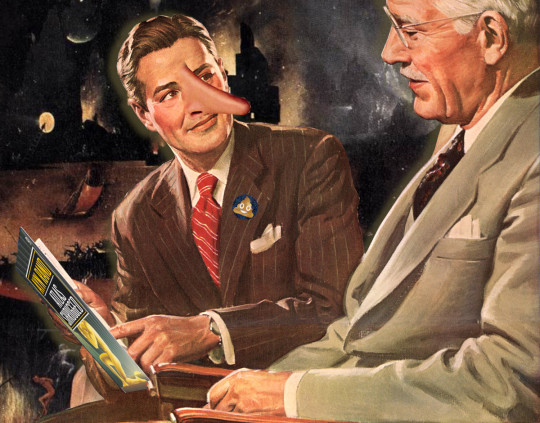
Next Tuesday (Oct 31) at 10hPT, the Internet Archive is livestreaming my presentation on my recent book, The Internet Con.

There are six lies that corporations have told since time immemorial, and Nick Hanauer, Joan Walsh and Donald Cohen's new book Corporate Bullsht: Exposing the Lies and Half-Truths That Protect Profit, Power, and Wealth in America* provides an essential taxonomy of this dirty six:
https://thenewpress.com/books/corporate-bullsht
In his review for The American Prospect, David Dayen summarizes how these six lies "offer a civic-minded, reasonable-sounding justification for positions that in fact are motivated entirely by self-interest":
https://prospect.org/culture/books/2023-10-27-lies-my-corporation-told-me-hanauer-walsh-cohen-review/
I. Pure denial
As far back as the slave trade, corporate apologists and mouthpieces have led by asserting that true things are false, and vice-versa. In 1837, John Calhoun asserted that "Never before has the black race of Central Africa, from the dawn of history to the present day, attained a condition so civilized and so improved, not only physically, but morally and intellectually." George Fitzhugh called enslaved Africans in America "the freest people in the world."
This tactic never went away. Children sent to work in factories are "perfectly happy." Polluted water is "purer than the water that came from the river before we used it." Poor families "don't really exist." Pesticides don't lead to "illness or death." Climate change is "beneficial." Lead "helps guard your health."
II. Markets can solve problems, governments can't
Alan Greenspan made a career out of blithely asserting that markets self-correct. It was only after the world economy imploded in 2008 that he admitted that his doctrine had a "flaw":
https://www.pbs.org/newshour/show/greenspan-admits-flaw-to-congress-predicts-more-economic-problems
No matter how serious a problem is, the market will fix it. In 1973, the US Chamber of Commerce railed against safety regulations, because "safety is good business," and could be left to the market. If unsafe products persist in the market, it's because consumers choose to trade safety off "for a lower price tag" (Chamber spox Laurence Kraus). Racism can't be corrected with anti-discrimination laws. It's only when "the market" realizes that racism is bad for business that it will finally be abolished.
III. Consumers and workers are to blame
In 1946, the National Coal Association blamed rampant deaths and maimings in the country's coal-mines on "carelessness on the part of men." In 2003, the National Restaurant Association sang the same tune, condemning nutritional labels because "there are not good or bad foods. There are good and bad diets." Reagan's interior secretary Donald Hodel counseled personal responsibility to address a thinning ozone layer: "people who don’t stand out in the sun—it doesn’t affect them."
IV. Government cures are always worse than the disease
Lee Iacocca called 1970's Clean Air Act "a threat to the entire American economy and to every person in America." Every labor and consumer protection before and since has been damned as a plague on American jobs and prosperity. The incentive to work can't survive Social Security, welfare or unemployment insurance. Minimum wages kill jobs, etc etc.
V. Helping people only hurts them
Medicare will "destroy private initiative for our aged to protect themselves with insurance" (Republican Senator Milward Simpson, 1965). Covid relief is unfair to people that are currently in the workforce" (Republican Governor Brian Kemp, 2021). Welfare produces "learned helplessness."
VI. Everyone who disagrees with me is a socialist
Grover Cleveland's 2% on top incomes is "communistic warfare against rights of property" (NY Tribune, 1895). "Socialized medicine" will leave "our children and our children’s children [asking] what it once was like in America when men were free" (Reagan, 1961).
Everything is "socialism": anti-child labor laws, Social Security, minimum wages, family and medical leave. Even fascism is socialism! In 1938, the National Association of Manufacturers called labor rights "communism, bolshevism, fascism, and Nazism."
As Dayen says, it's refreshing to see how the right hasn't had an original idea in 150 years, and simply relies on repeating the same nonsense with minor updates. Right wing ideological innovation consists of finding new ways to say, "actually, your boss is right."
The left's great curse is object permanence: the ability to remember things, like the fact that it used to be possible for a worker to support a family of five on a single income, or that the economy once experienced decades of growth with a 90%+ top rate of income tax (other things the left manages to remember: the "intelligence community" are sociopathic monsters, not Trump-slaying heroes).
When the business lobby rails against long-overdue antitrust action against Amazon and Google, object permanence puts it all in perspective. The talking points about this being job-destroying socialism are the same warmed-over nonsense used to defend rail-barons and Rockefeller. "If you don't like it, shop elsewhere," has been the corporate apologist's line since slavery times.
As Dayen says, Corporate Bullshit is a "reference book for conservative debating points, in an attempt to rob them of their rhetorical power." It will be out on Halloween:
https://bookshop.org/a/54985/9781620977514

If you'd like an essay-formatted version of this post to read or share, here's a link to it on pluralistic.net, my surveillance-free, ad-free, tracker-free blog:
https://pluralistic.net/2023/10/27/six-sells/#youre-holding-it-wrong
#pluralistic#corporate bullshit#lies#books#reviews#taxonomies#labor#denialism#consumerism#Nick Hanauer#Joan Walsh#Donald Cohen#history#object permanence#taking the right seriously
847 notes
·
View notes
Text
a danger of talking about diagnosis as though it legitimises xyz functional struggle is that it always carries the implication that people w/out a medical chart designation are not entitled to experience the same difficulties, or more specifically are not entitled to the accommodations for it. this has obviously shitty consequences for people who cannot afford encounters w/ the medical system, but also for those who simply don't fit or don't use specific professionally legitimated nosological taxonomies. this is why it's interpreted as a threat to recognise & accommodate disability w/out requiring a specific diagnostic term or process as a mediator. diagnosis can only grant access to certain resources for certain people by virtue of its antithetical power to gatekeep them from others; and ofc the access it does grant is always & therefore limited and precarious in nature
142 notes
·
View notes
Text
Taxonomy, like adultery, is a sin - but since it doesn't stop the Bdubs Patented Third Wheel Effect, we won't let it stop our categorizing its manifestations either.
The Third Wheel Effect
Bdubs has been engineering partnership and love triangles since his first SMP over a decade ago. In fact it's the consistency across such a long time that obscures the pattern's specifics: it's easy to tell he likes to play on jealousy and cast himself as a villain, but harder to look past the variations of who is pulled into what role obscures the fact that there's truly a small group of overlapping tropes where the players of each role may change, but fundamentally, it's the Third Wheel Effect all the way down.
The Tropes
WELCOME HOME, CHEATER: The earliest, but also the most flexible, as Bdubs is just as happy to have the B-Team in jeopardy because Genny caught him shacked up with Etho as he is to confront Doc for making out with Ren in his absence. As long as someone's mad with cause, it's good fun.
I NEVER LIKED HIM ANYWAY: In contrast to Welcome Home, Cheater, in this subset it's revealed the presumed original pair was a lie, and the third person has had his heart all along. The willingness of the surprised third party is mostly irrelevant to the high drama unfolding, probably under duress in a death game. In a certain light, the crumbling of Team BEST is not not this.
iS THIS A HAPPY COUPLE?: If you read the last description and thought it was missing handcuffs, you know where this is going. For some reason, partners are shaken up and new ones are established on the threat of death if they don't work together. Whether there's still lingering longing for the new third wheel is an open question. Oddly, tends to backfire with a karmic kind of irony, like Impulse and Bdubs' death in Double Life, or dying to your own bear trap anyway in Survival of the Fittest.
POWER STRUGGLE: Bdubs has a habit of appointing heads of state and then somehow acting affronted when he transitions from election champion to one of many civic advisors. Suddenly the subtext turns sharply toward not just governance but government affairs. The threatening third(s) may be or act oblivious to their alleged love triangle, like Cub's nonchalance at Bdubs' rage while they both worked for Mayor Scar.
THEY DON'T LOVE YOU LIKE I DO: Most often instigated directly by Bdubs, the triangle becomes a game of tug-o-war - or at least Bdubs sees it that way. This is especially likely as a result of a Power Struggle, although Etho gets a less angry, more angsty flavor of this in some Life seasons. Also plays very well with Welcome Home Cheater.
Conclusion
Although Etho is a focal point of many past and present love triangles, sometimes even instigating conflict related to them himself, Bdubs' pattern of needing a third wheel to flesh out relationship dynamics is both broader and more predictable than it might appear. Any combination of players who will yes-and him and let him be a little stupidly vindictive or encourage interpersonal drama is a valid combination. It's Etho happily playing into Bdubs' natural wheelhouse and drawing it out of him pre-emptively that adds to them being a pair with no set configuration but that is more enduring than any other alliances they've made over the years.
#game shows DO touch our lives#the grand unified theory of ethubs#<- to come. this is an outtake/appendix to it#bdoubleo100#ethubs#the grand unified theory
99 notes
·
View notes
Text
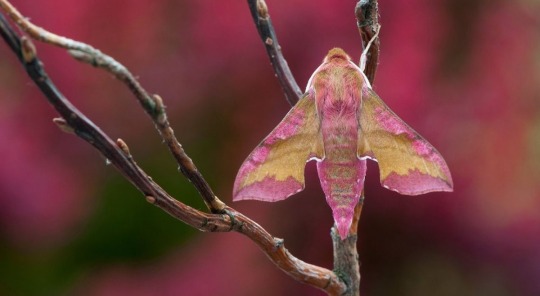

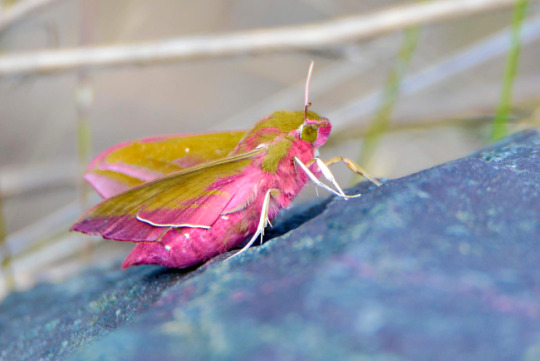
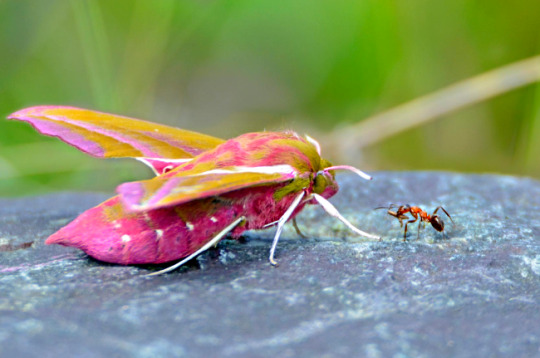
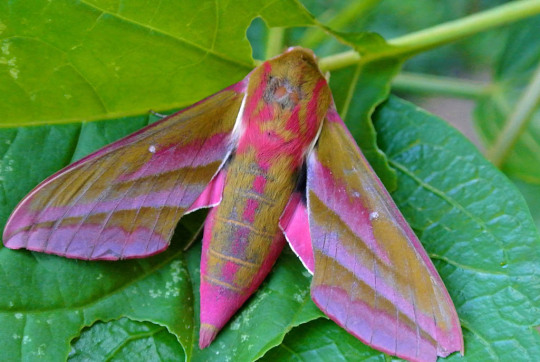
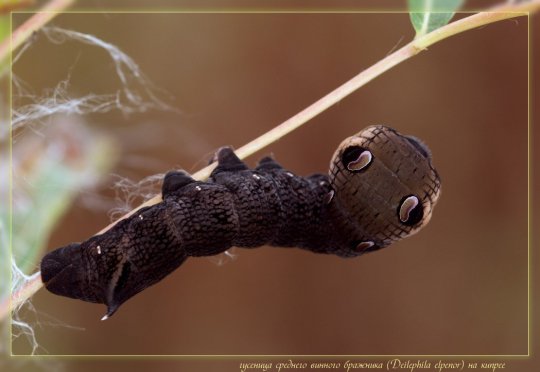


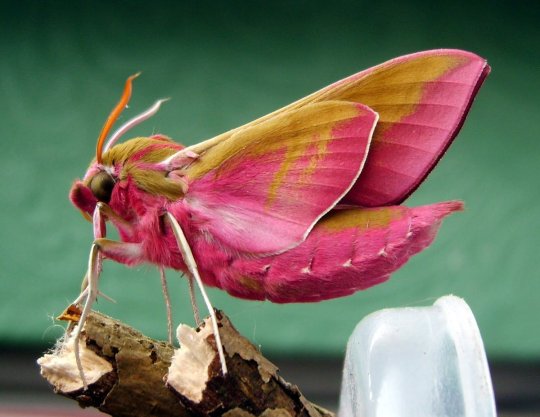



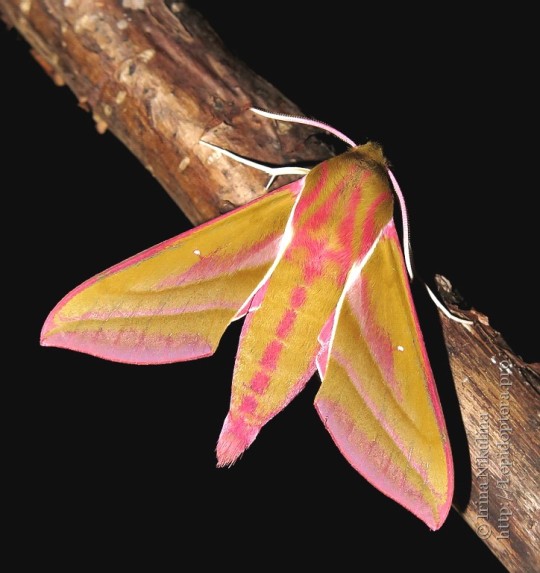
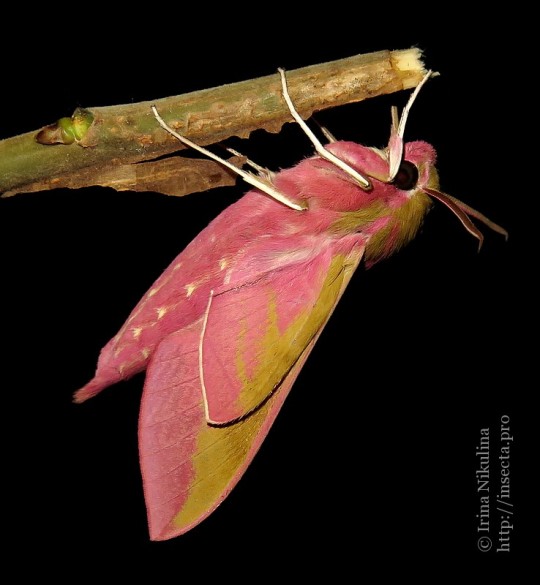

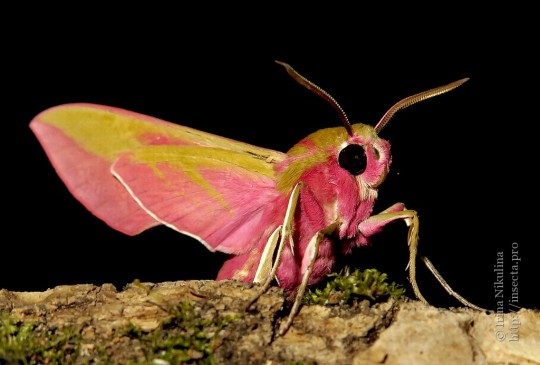


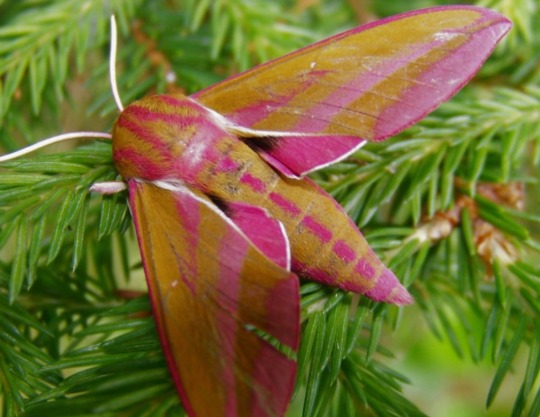
БРАЖНИКИ: ВИННЫЙ. Elephant Hawk-moth.
Бражник винный, или бражник средний винный (Deilephila elpenor) — бабочка из семейства бражников (Sphingidae). Латинское название Deilephila elpenor винный бражник получил в честь героя мифологии: Эльпенор — друг Одиссея, возвращавшийся с ним из Трои; погиб, упав с крыши дворца волшебницы Цирцеи. Винный бражник отлично летает, один из самых быстрых летунов не только среди бабочек, но и среди насекомых в целом. Может развивить скорость до 60 км/ч! А во время миграции способен преодолевать расстояние в несколько тысяч километров.
Винный бражник — одна из самых крупных бабочек в мире. Размах крыльев 50—70 мм. Передние крылья оливково-зелёные, с розовым полем у внешнего края и двумя розоватыми полосами, следующими от заднего края к вершине крыла. Задние крылья розовые, с чёрным основанием. Тело зеленоватое, с розовыми полосками. Эта необычайно интересная на вид бабочка обитает в Европе, включая юг Урала. Во время опас��ости бражники могут начать громко и отчаянно пищать для отпугивания потенциальной угрозы. Удивительное насекомое является очень редким и охраняется на законодательном уровне.
The Elephant Hawk-moth (Deilephila elpenor) is a butterfly from the hawk moth family (Sphingidae). The Latin name Deilephila elpenor was given to the Elephant Hawk-moth in honor of the hero of mythology: Elpenor is a friend of Odysseus, who returned with him from Troy; he died after falling from the roof of the palace of the sorceress Circe. The Elephant Hawk-moth moth flies perfectly, one of the fastest flyers not only among butterflies, but also among insects in general. It can reach speeds of up to 60 km/h! And during migration, it is able to cover a distance of several thousand kilometers.
The Elephant Hawk-moth is one of the largest butterflies in the world. The wingspan is 50-70 mm. The forewings are olive green, with a pink margin at the outer edge and two pinkish stripes following from the posterior edge to the apex of the wing. The hindwings are pink, with a black base. The body is greenish, with pink stripes. This extremely interesting-looking butterfly lives in Europe, including the south of the Urals. During a time of danger, hawk moths may begin to squeak loudly and desperately to scare off a potential threat. The amazing insect is very rare and is protected by law.
Источник:terrarium-online.com/arthropods/insects/deilephila-elpenor/,sergeyshu.livejournal.com/88937.html,zapovedtravel.ru/Fauna?id=0b43ab69-8626-4329-b6c3-f5b806573683&cardId=97fe88bf-fd60-44bd-900d-5bc34b80fbf1, /ru.wikipedia.org/wiki/Бражник_винный, /insecta.pro/ru/taxonomy/2820,/www.urral.ru/vid/122.htm.
#nature#insect#insect photography#Deilephila elpenor#Elephant Hawk-moth#plants#insect art#flowers#flower aesthetics#macro photo#природа#фото насекомых#насекомые#Бражник винный#растения#цветы#макрофото
148 notes
·
View notes
Text
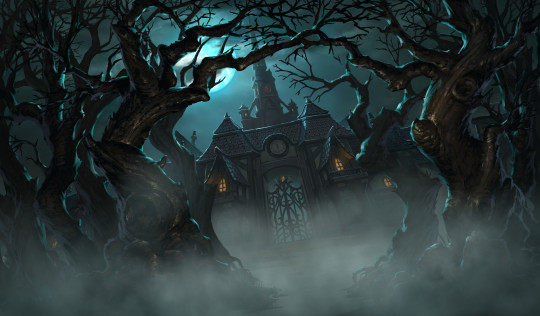
Tableskills: Creating Dread
I've often had a lot of problems telling scary stories at my table, whether it be in d&d or other horror focused games. I personally don't get scared easily, especially around "traditionally horrifying" things so it's hard for me to recreate that experience in others. Likewise, you can't just port horror movie iconography into tabletop and expect it to evoke genuine fear: I've already spoken of being bored out of my mind during the zombie apocalypse, and my few trips into ravenloft have all been filled with similar levels of limp and derivative grimdark.
It took me a long time (and a lot of video essays about films I'd never watched) to realize that in terms of an experience fear is a lot like a joke, in that it requires multiple steps of setup and payoff. Dread is that setup, it's the rising tension in a scene that makes the revelation worth it, the slow and literal rising of a rollercoaster before the drop. It's way easier to inspire dread in your party than it is to scare them apropos of nothing, which has the added flexibility of letting you choose just the right time to deliver the frights.
TLDR: You start with one of the basic human fears (guide to that below) to emotionally prime your players and introduce it to your party in a initially non-threataning manor. Then you introduce a more severe version of it in a way that has stakes but is not overwhelmingly scary just yet. You wait until they're neck deep in this second scenario before throwing in some kind of twist that forces them to confront their discomfort head on.
More advice (and spoilers for The Magnus Archives) below the cut.
Before we go any farther it's vitally important that you learn your party's limits and triggers before a game begins. A lot of ttrpg content can be downright horrifying without even trying to be, so it's critical you know how everyone in your party is going to react to something before you go into it. Whether or not you're running an actual horror game or just wanting to add some tension to an otherwise heroic romp, you and your group need to be on the same page about this, and discuss safety systems from session 0 onwards.
The Fundamental Fears: It may seem a bit basic but one of the greatest tools to help me understand different aspects of horror was the taxonomy invented by Jonathan Sims of The Magnus Archives podcast. He breaks down fear into different thematic and emotional through lines, each given a snappy name and iconography that's so memorable that I often joke it's the queer-horror version of pokemon types or hogwarts houses. If we start with a basic understanding of WHY people find things scary we learn just what dials we need turn in order to build dread in our players.
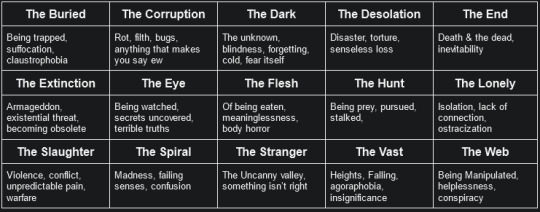
Implementation: Each of these examples is like a colour we can paint a scene or encounter with, flavouring it just so to tickle a particular, primal part of our party's brains. You don't have to do much, just something along the lines of "the upcoming cave tunnel is getting a little too close for comfort" or "the all-too thin walkway creaks under your weight ", or "what you don't see is the movement at the edge of the room". Once the seed is planted your party's' minds will do most of the work: humans are social, pattern seeking creatures, and the hint of danger to one member of the group will lay the groundwork of fear in all the rest.
The trick here is not to over commit, which is the mistake most ttrpgs make with horror: actually showing the monster, putting the party into a dangerous situation, that’s the finisher, the punchline of the joke. It’s also a release valve on all the pressure you’ve been hard at work building.
There’s nothing all that scary about fighting a level-appropriate number of skeletons, but forcing your party to creep through a series of dark, cobweb infested catacombs with the THREAT of being attacked by undead? That’s going to have them climbing the walls.
Let narration and bad dice rolls be your main tools here, driving home the discomfort, the risk, the looming threat.
Surprise: Now that you’ve got your party marinating in dread, what you want to do to really scare them is to throw a curve ball. Go back to that list and find another fear which either compliments or contrasts the original one you set up, and have it lurking juuuust out of reach ready to pop up at a moment of perfect tension like a jack in the box. The party is climbing down a slick interior of an underdark cavern, bottom nowhere in sight? They expect to to fall, but what they couldn't possibly expect is for a giant arm to reach out of the darkness and pull one of them down. Have the party figured out that there's a shapeshifter that's infiltrated the rebel meeting and is killing their allies? They suspect suspicion and lies but what they don't expect is for the rebel base to suddenly be on FIRE forcing them to run.
My expert advice is to lightly tease this second threat LONG before you introduce the initial scare. Your players will think you're a genius for doing what amounts to a little extra work, and curse themselves for not paying more attention.
Restraint: Less is more when it comes to scares, as if you do this trick too often your players are going to be inured to it. Try to do it maybe once an adventure, or dungeon level. Scares hit so much harder when the party isn't expecting them. If you're specifically playing in a "horror" game, it's a good idea to introduce a few false scares, or make multiple encounters part of the same bait and switch scare tactic: If we're going into the filthy gross sewer with mould and rot and rats and the like, you'll get more punch if the final challenge isn't corruption based, but is instead some new threat that we could have never prepared for.
Art
359 notes
·
View notes
Text
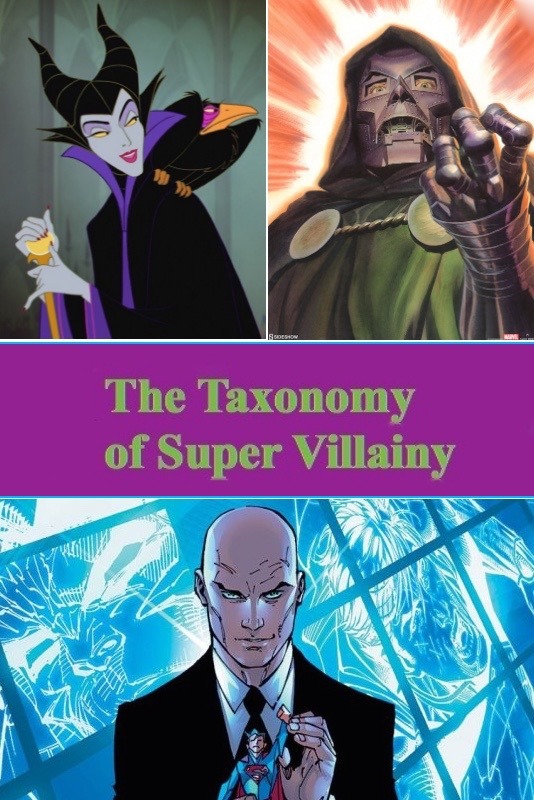
Introduction
There are many, many super villains in the realms of fiction, comic books, cartoons and movies. When encountering such villains, these costumed cads and dangerous dastards, it is of the utmost importance that one know the precise type of malefactor is at hand. While no two villains are exactly alike, as a whole these scoundrels can be roughly categorized into a systemic taxonomy; a classification based upon the qualities of threat, capability and ambition.
This taxonomy is sequential in respect to the level of danger, commitment and aspiration. It begins at a first rung with the lowly Goons, moving quickly to the dangerous Enforcers, then the mercurial Rogues, followed by the calculating Lieutenants and finally the Nemeses… the most dangerous villains of them all.
Goons
First let us look at the Goons. These are the minions, the henchmen and stooges who use their powers to do the bidding of a more sinister and scheming master.
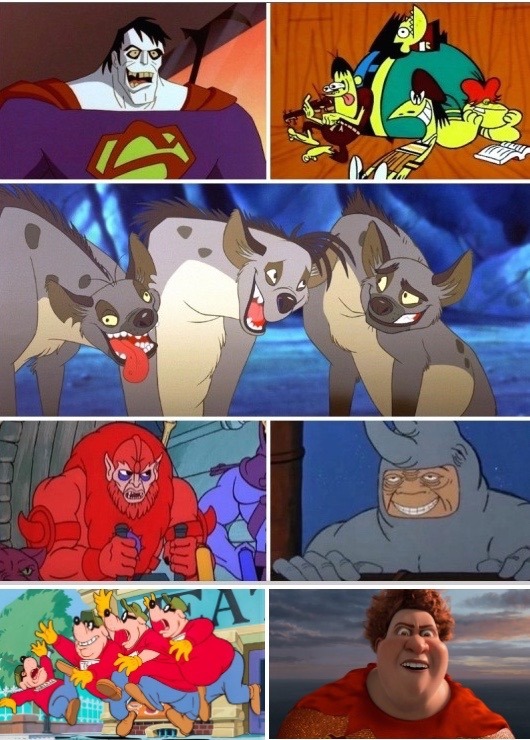
Goons can be quite formidable, possessing a great deal of raw strength and power. Yet their lack of foresight, aspiration and direction leave them in the position of playing the role of pawns.
Whether it be the result of laziness, naïveté, psychological difficulty or some manner of deficiency, Goons are easily manipulated. They are frequently duped or cajoled into doing the bidding of others. Sometimes they will perceive themselves as being equals with those they serve. In truth, however, these misguided flunkies are almost always viewed as disposable... as mere vassals who will be sacrificed or simply discarded on a whim.
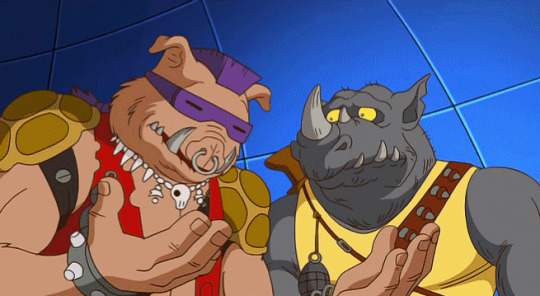
Criminal organizations will frequently have numerous henchmen who are nameless and interchangeable. What distinguishes a super villain Goon from the more garden variety lackey is their physical power and capacity for destruction. They possess all the raw ability to be a more substantial menace but none of the imagination, presentation or drive. They simply lack the je ne sais quoi needed to be a more fully actualized embodiment of super villainy.
And yet this does not make the Goon any less dangerous. Indeed the Goon’s fragile ego coupled with their destructive capability can lead to threats on par with a natural disaster.
Conversely, the Goon can sometimes be the most likely type of super villain to be turned, moved toward the path of heroism. Most Goons just want to be seen and valued, to garner a place where they feel they belong. More sophisticated villains will take advantage of this unmet need, offering the Goon a sense of purpose. If a hero can convince a Goon that they are being manipulated and offer a more authentic sense of validation, the goon may very well switch sides and become heroic.
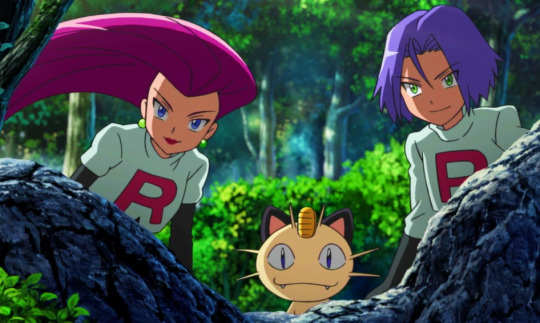
For the most part, however, Goons are rather satisfied with their lot. They are often simple souls with simple needs. Being a Goon affords a sense of direction and license to be destructive bullies.
The Enforcers
When the raw power of a super villain Goon is coupled with a heightened degree of shrewdness, confidence, avarice and capability, the end product is often The Enforcer.
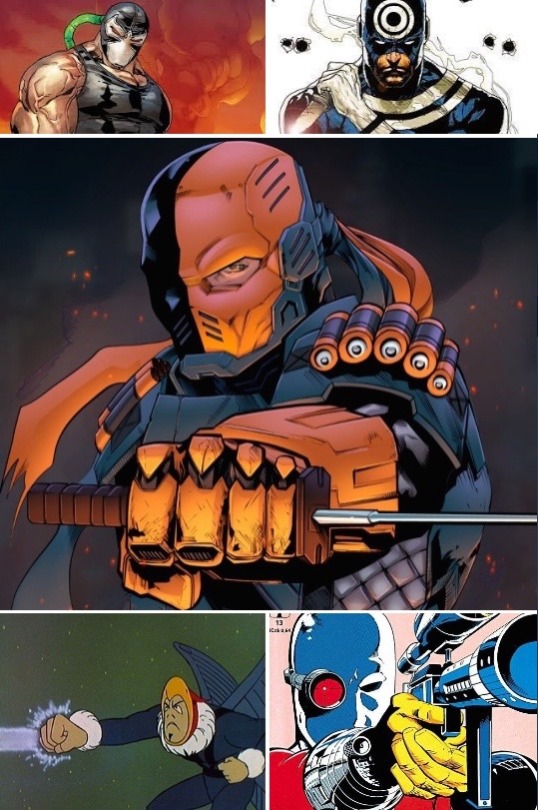
These are the mercenaries, assassins and bounty hunters… the guns-for-hire who are brought in for a specific task (commonly the elimination of a hero). These villains are not interested in taking over the world, garnering power and influence, they just want to get paid.

Said payment is most often money... but prestige, thrills and a bolstering of one’s ego are also a commonly accepted currency. Sometimes Enforcers will be pitted against a specific hero and the simple opportunity to best that hero, to show themselves as the superior entity, is motivation enough to take on the job. They can be like big game hunters, in desperate search of a new and bigger trophy to add to their ever-growing collection.
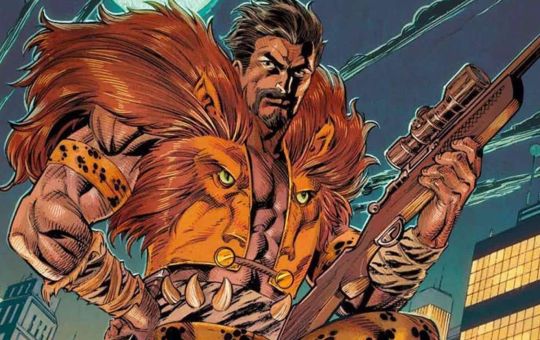
Some enforcers may be motivated by mere boredom. They tend to be thrill-seekers and super villainy is an irresistible rollercoaster that acts to quell the tedium. It is not uncommon for there to be a degree of sadism to the enforcer... even psychopathy. Their passion is doling out pain and destruction; they revel in being feared. They are dangerous and unpredictable and will endeavor to succeed at any and all costs. They are not to be taken lightly.

It is not unheard of for Enforcers to have underlings of their own, aides or minions who will assist in their schemes. Or they may work in conjunction with Goons. Yet their values are strictly mercenary. Their morals and philosophy are entirely for hire. Some Enforcers may adhere to their own, personalized code of conduct... yet it is a strictly idiosyncratic (and often malleable) matter.
Phrased simply, they are not individuals to be trusted; an Enforcer will turn on their employer the moment that it better suits their interests. Beware, my friends, Enforcers are danger incarnate...
Rogues
Rogues are outsiders, individuals who just do not fit in with the common and traditional conventionalities of a given society. They are misfits, freaks, square pegs in a world of round holes. Yet they also have power; they are capable, smart, ruthless and shrewd. They do not fit in, but they do not need to; they can force their worlds to accommodate to them.
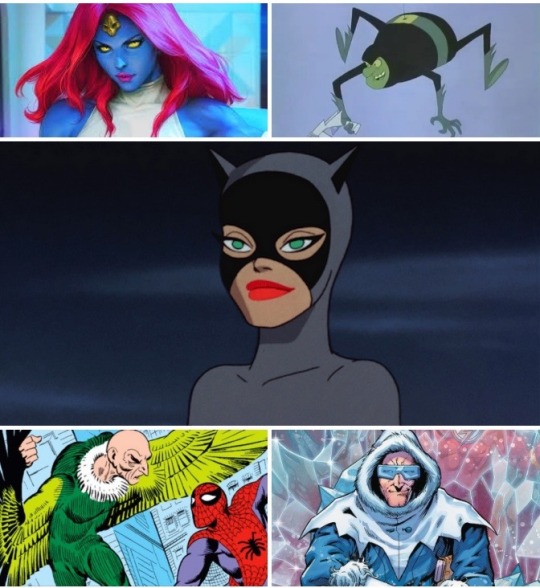
Rogues are outlaws. They take what they want when they want it. Rarely is there an overarching agenda. Rogues do not crave power, they do not want to rule the world. They just enjoy a good time, desire the finer things and will take all that they feel they are owed.
Many factors can go into the making of a Rogue. Circumstances of their upbringing, their appearance, deprivations of different kinds, accidents… all maters that have put the Rogue in a place of alienation from society writ large. In some regards they are victims, perhaps not always innocent victims, but victims nonetheless… and victims with agency. For they have power and the capability to extract whatever vengeance or retribution they feel they deserve.
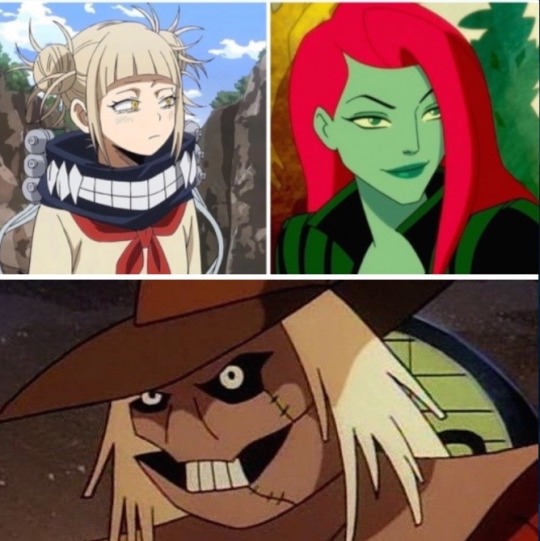
Not all Rogues are victims of misfortune. Some merely possess a sense of entitlement and a desire for adventure. Morality, for better or worse, is just not a central feature in the make up of the Rouge. They see the world around them as a harsh and unforgiving realm and they will take what they want, do as they please, simply because they can. They are not motivated by hate, avarice nor a diminished sense of self esteem. They are supremely independent and the needs, feelings and wellbeing of others are not matters of any great concern.
The super villain Rogue has much in common with the archetype of the Trickster from myths and fable. Tricksters are breakers of boundaries who enjoy disrupting societal principles and norms. These are often supernatural beings whose playful antics act to mock authority and question assumption. Rogues are similar. They too seek to disrupt authority, upset balance and turn social decorum unto its head.
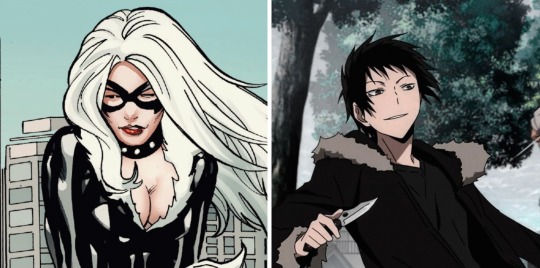
Whereas many Tricksters of lore aim to teach lessons regarding the hubris of mankind, Rogues tend to be much more self-serving in their conduct. Rogues are not agents of chaos, they just want to express their freedom and garner wealth and renown.
While Rogues often prefer to work on their own, they are by no means entirely above joining forces with other villains in working toward a mutually desired goal. Although it is rare, a Rogue may even allow themselves to be employed by a Nemesis, a more diabolical cad whose overarching desires very much do not align with their own. In these situations, the Rogue’s hand is either forced or they are simply biding their time for the ideal opportunity to engaged a well-planned and self-serving betrayal.
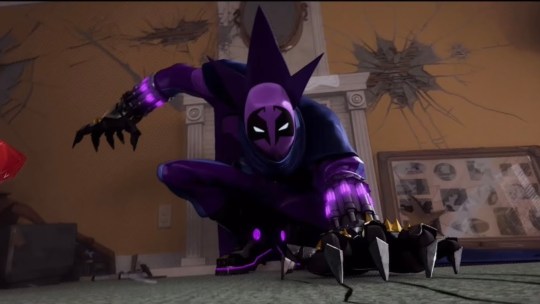
It is the Rogue’s refusal to adhere to societal principles and the law that often brings them into conflict with heroes. And the sympathetic qualities of the Rogue can sometimes cause a hero to question their own beliefs and moral alignment. The Rogue represents a defiance toward the status quo of a given society... that existing state of affairs that maintains social and financial stratification. The status quo is never an entirely fair system, it will always benefit some at the expense of others,...and it can be tempting to forcefully push back against the inequities that exist therein. Indeed there have been many a hero who has fallen under the sway of a charismatic Rogue when made to see said inequities.

And yet Rogues tend to be quite selfish. They have been wronged and use it as an excuse to do whatever they please and put their own needs above all others. In so doing they may end up hurting others in the same fashion they themselves had been hurt. These Rogue could be heroes, yet frequently lack the sense of selflessness that truly makes a hero heroic.
Under the right circumstances, however, the Rogue can find themselves in the role of the antihero... acting as a protagonist despite lacking the traditional qualities most often associated with heroism. This is most often the case when the Rogue’s goals put them into opposition with another villain, particularly a villain much more vile than themselves.

Although some Rogues may fit into the role of an antihero, it does not necessarily make them any less dangerous. The primary characteristic of a Rogue is a rejection of the normative confines of a society. And this can include the confines of morality. The Rogue will resort to murder and mayhem if they deem it a necessity. So beware, my friends, beware.
The Lieutenants
In some regards, Lieutenants are the villainous analog to the hero’s sidekick. They are the primary right-hand operatives of the arch villain… an amalgamation of a partner, field commander, conciliary and moll. They are neither a Nemesis nor a Goon, but something in between.
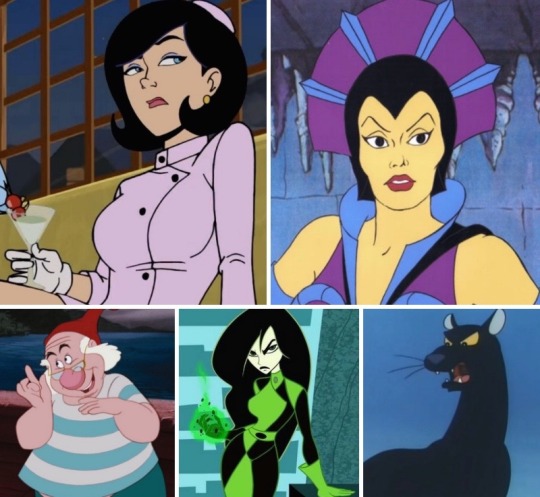
Quite often the Lieutenant will be a good deal more competent, pragmatic and even more intelligent compared to the villain they serve. They could easily be a leader in their own right, yet lack the megalomania that is at the heart of a true Nemesis. What these lieutenants do possess, however, is a deeply seated need to belong... to have a parental-like figure that offers direction and purpose. Some even love the villains they serve and remain at their side for this reason alone.
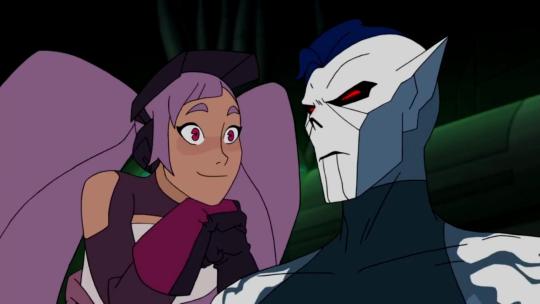
Lieutenants crave power and respect, they feel a poignant need for validation and this will often lead them to battle against the heroes with vigorous intensity. They can be the most dangerous kind of villain of them all in that they are highly motivated and intelligent as well as desperate to succeed; almost like a child who will do anything to win the approval of a parent.
The neurotic nature of the Lieutenant’s motivation frequently leaves them a good deal less sadistic and malevolent compared to the Nemeses they serve. They are not bloodthirsty or callous; many may even have care for the innocent lives that a dastardly plot might harm. And yet the need for approval acts to outweigh any moral qualms they may possess. That being said, it is not entirely unheard of that a Lieutenant will turn on their leader if the destructive stakes become far too high.
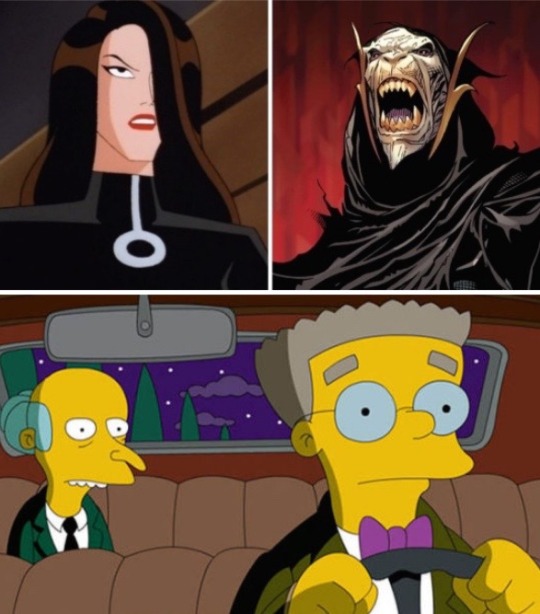
Somewhat akin to the Goon (or even the Rogue), the Lieutenant possesses the potential to turn to the side of good, to be redeemed and become something of a hero. The Lieutenant is highly capable and shrewd, but not above manipulation. Often times they will find themselves in the service of a master who does not have their best interests in mind.
Discovering that they are not as valued by their leader as they may have thought can help the Lieutenant rediscover their sense of honor... a clearer picture of right and wrong. Herein there becomes an increased likelihood that the Lieutenant will turn and aide the heroes... possibly even become a hero themselves.
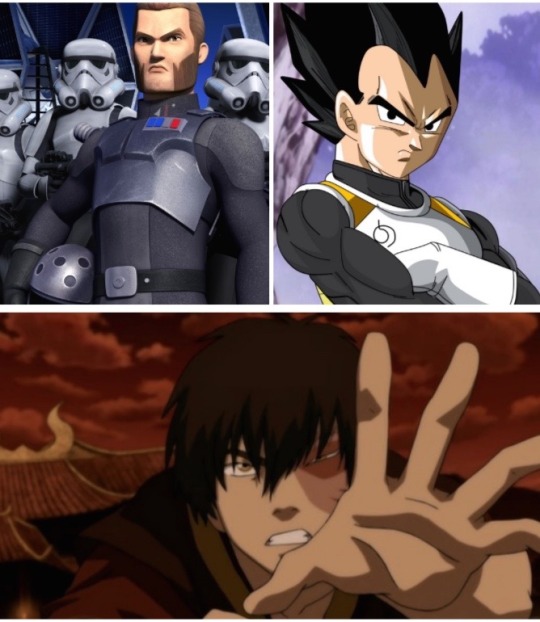
Of course this is not to say that every Lieutenant possesses a staunch code of honor or secret heart of gold. Some are just as rotten and despicable as the cads they serve. They have pled fidelity to their masters and many see the orders they have been issued as on par with a godly and righteous decree.
At the same time that many Lieutenants are unquestioningly loyal, others can be duplicitous. Again, it is not uncommon that a Lieutenant will actually be more competent compared to those they serve. And some possess the ambition to usurp their masters, concocting fiendish schemes to depose their leader, take control and ostensively matriculate to the position of the Nemesis.
This particular dynamic is quite often at play with the ‘secret lieutenant.’ This is something of a subcategory reserved for those second-in-commands who are initially believed to be the primary villain… only for it to be later revealed that there is an entity even more diabolical above them.
Nemeses often cherish their anonymity, preferring to remain a more secretive threat from behind the proverbial curtain. To this extent they need a Lieutenant to stand in as their vassal. It is not uncommon for these proxies to be misidentified as the primary Nemesis. And more often than not, these secret Lieutenants become accustomed to the power they wield... harboring resentment toward the shadowy overlords that they secretly serve. Sometimes they will take action to achieve their ambitions… yet it rarely works in their favor and a Lieutenant’s efforts to usurp their masters will frequently have deadly consequences.
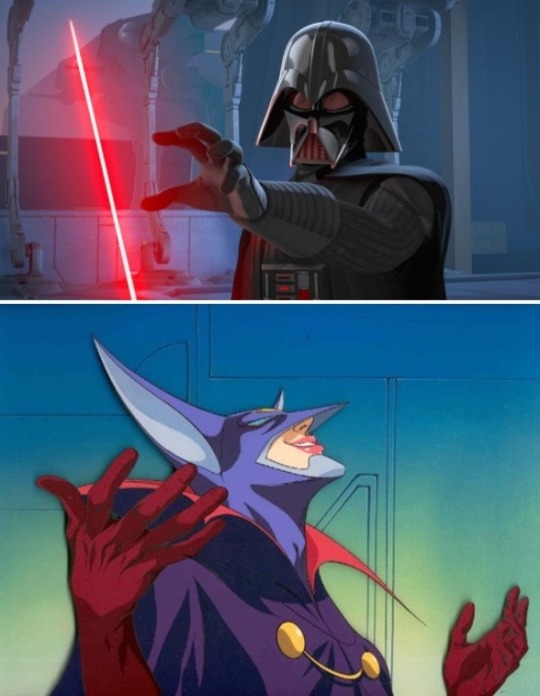
There are reasons after all, that Lieutenants and Lieutenants and Nemeses are Nemeses. The qualities that make for a true Nemesis are as insidious as they are dangerous. They are not so easily overtaken nor replaced.
Nemeses
This brings us to the are the baddest of the bad… the arch foes, the megalomaniacal would-be conquerers whose devilish schemes put us all in grave peril. The pinnacle of villainy; the foil to all things good, selfless, noble and heroic. The Nemesis!
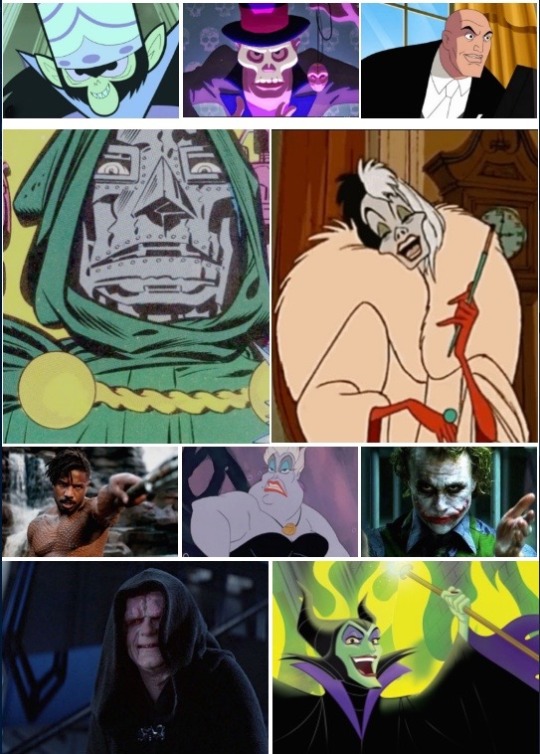
The primary feature to the Nemesis is their motivation. They have a keen notion of how things should be and will stop at nothing toward imposing their will so to bring their goals to fruition. Such goals may be power, conquest, revenge or the acquisition of fabulous wealth (or all of the above). Regardless, the Nemesis believes that fulfilling this goal is a righteous purpose, that it is a destiny ordained unto them by some manner of a divine source.
Most Nemeses do not see themselves as evil. They are the heroes of their own stories and believe themselves to be in the right. Furthermore, any who oppose them represent an effrontery that need be eliminated with extreme prejudice. Theirs is a glorious purpose and nothing nor no one may be allowed to obstruct their destiny.

With such lofty ambitions, it is frequently necessary for these Nemeses to create elaborate organizations… secret and sinister syndicates composed of various operatives, agents, minions and flunkies. The Nemesis can be extremely charismatic ideologues and they usually have little difficulty in recruiting scores of cronies and henchmen willing to lay down their lives in the service of a master. Whist some Nemeses have to resort to paying their underlings or at least putting forth the promise that the toiling will result in power and riches, most are simply able to amass a loyal following through their magnetic charm alone.

The true qualities of the Nemesis often comes into greater focus in juxtaposition to their arch enemy. The primary foe of the Nemesis acts to define them, highlighting their traits in contrast to their opposite. The more good and pure the hero the more twisted and evil their nemesis. One acts to complete the other like two sides of a scale equally balanced.
Indeed it is not unusual for a Nemesis to become obsessed with their arch foe... so much so that many Nemeses may even hesitate at the opportunity to finally vanquish said foe. They can come to feel actualized by the conflict and may fear a loss of identity were their enemy to be truly eliminated.
Many heroes will have multiple arch enemies, but Nemeses themselves are more exclusive, monogamous in who they see as their principle foe. Furthermore, they can be quite jealous when it comes to the attention of their arch enemies. So much so that it is not unheard of for a Nemesis to lend a hand to their foe in doing away with a third party interloper.
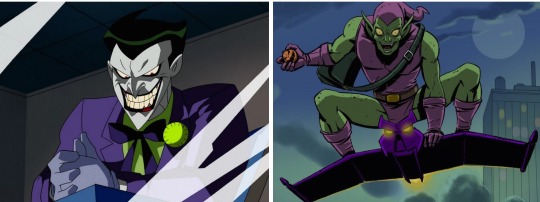
Not every Nemesis is cut from the same cloth. Some can be mere mustache-twirlers… finks who commit evil deeds for the mere sake of it. The more memorable and fully actualized Nemesis, however, is complex and nuanced. There is an element of the inscrutable that can provoke fascination. They are like elaborately colored serpents who elicit equal measures of fear and curiosity.
Despite their despicable acts, the Nemesis can frequently be found to be a rather sympathetic figure. Similar to the Rogue, the Nemesis is rejecting of the societal status quo. They believe they know better, that imposing their will can bring about much needed change. Considering the various inequities and injustices entailed in any society, the promise of change can be very alluring. Tearing something down is always easier than creating something new; and the Nemesis excels at the former whilst offering mere promises of the latter.
Add to this the flamboyant charm and sleek aesthetics of so many super villains and it can all come across as quite alluring. And this attraction can be greatly magnified in those feeling even the least bit alienated by the confines and restrictions of a societal equilibrium.
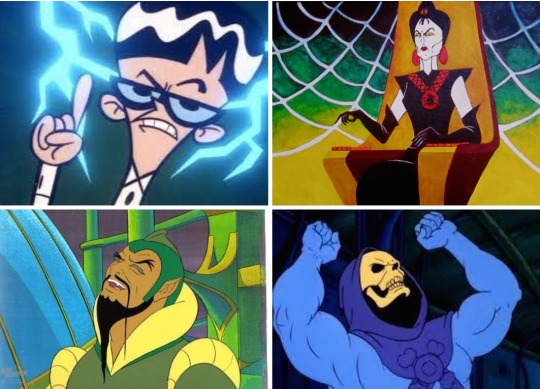
Most all Nemeses are idealists. Their ideals are twisted and egocentric, but they are idealists nonetheless. In their heart of hearts, these cads honestly believe that the imposition of their self-serving values will bring about their notion of a better world. Even the ones who claim to be nihilists, who say they just want to see the world burn, harbor the desire to harness power and refashion it all in the cast of their megalomania.
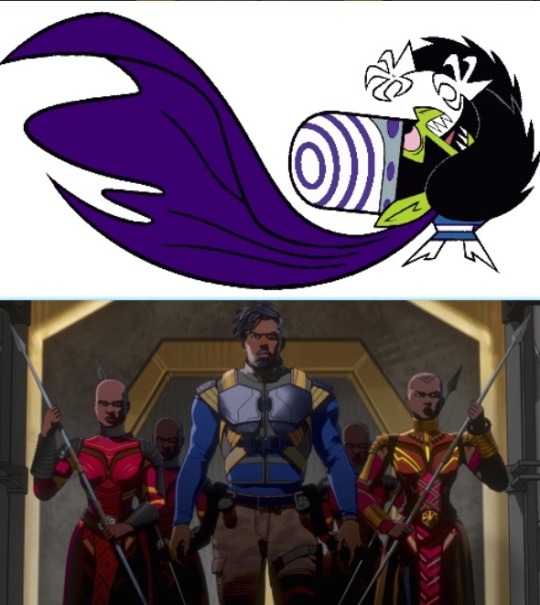
The Nemesis is an enjoyable character only to the extent that they do not win, that their schemes remain unfulfilled. And if said plot is at least partially accomplished, the fun part is their histrionic efforts to put down resistance and maintain their tenuous grip on power.
Conversely, Nemeses who too closely parrot real life horrors become unenjoyable entities for the audience. There are plenty of villains who are racists, who commit sexual assault and/or who adhere to repugnant philosophies. These baddies do not fully qualify as super villains. They are just regular villains. Super villains, like superheroes, are figures of fantasy... they are meant to be fun. A true super villain, a real nemesis, may toe the line of real-life horror but should not overstep it.
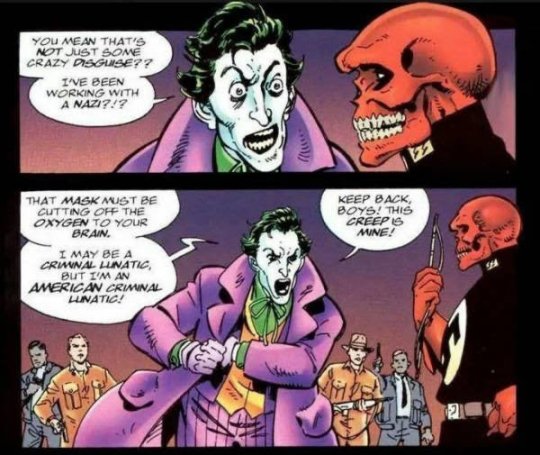
Not all Nemeses pose the same level of peril. The Nemesis covets a world bent to their whim, yet not all possess the faculties needed to constitute a true threat. Many nemeses are capable, shrewd and cunning; whilst others can be plagued by hubris, myopathy and just plain incompetence. And others still can demonstrate great prowess in one instance and then great blundering in the next. The same passion and unwavering drive that fuels the Nemesis can also lead them to make costly, foolhardy decisions. Nevertheless, a buffoonish villain can be just as captivating and fun as one who is sophisticated and poised.
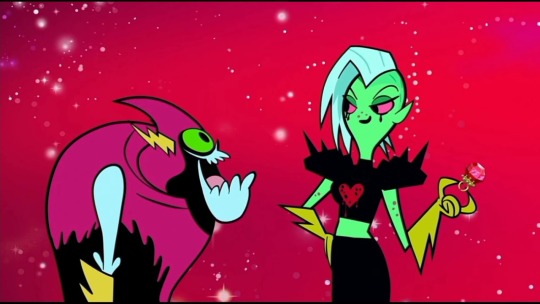
Of course any summation of the Nemesis, or super villains in general, would be incomplete without addressing the matter of how frequently villainous characters have been used in stories as thinly veiled stand-ins for the queer community.
This is done through a kind of coding… subtle and not-so-subtle hints that the villain is something other than heterosexual. Male villains are often presented as effeminate or flamboyant, female villains as masculine and butch. This is meant to have the effect of making the Nemesis appear more deviant and dangerous. As well as make their ultimate defeat by the hero somehow more satisfying, reinforcing the erroneous notion that being queer is in some way morally wrong.
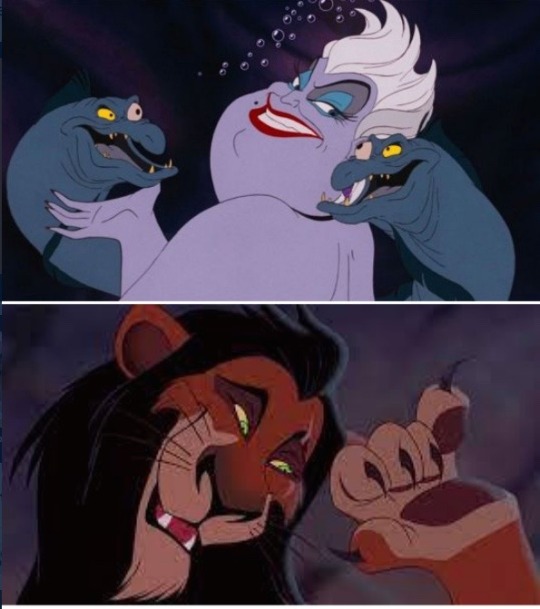
This queer-coding of the villain is not always consciously intended to be homophobic/heterosexist, but it often has that effect; and perpetuates harmful stereotypes about the LGBTQ+ community that can lead to real-world discrimination and violence.
There can be a strange and entirely artificial conversion of machiavellian manipulation and the disrupting of traditional notions of gender. This is the idea that those who are transgender, women who act masculine or men who act feminine, are somehow engaging in a sinister chicanery. That they are temping and coercing the innocent and vulnerable into embracing deviancy.
This is not the only way in which the Nemesis has been used as a means to present social-political agendas. Near countless forms of bigotry and prejudice have been repackaged in the form of a sinister Nemesis. The ‘yellow peril’ style villain depict people of Asian descent as cold, calculating and soulless; whereas the savage ‘witchdoctor warlord’ presents Black and Brown people as primitive, superstitious and godless; and the hook-nosed ‘miserly masterminds’ puts forward Jewish people as conniving, greedy and unscrupulous.
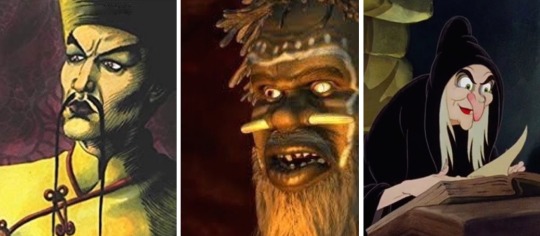
Ironically, as time has gone by, this politicizing of the villain has only acted to make the Nemesis even more intriguing and appealing. In that the Nemesis embodies all that is debaucherous, forbidden and deviant, the hero becomes more and more forced into role of the foil. The hero must be pious, chased and entirely pure of heart. They become flawless and such perfection in the realm of fantasy and wish-fulfillment is rather boring. As the hero becomes more two-dimensional and un-relatable so too is their arch Nemesis made more alluring and empathetic.

Indeed this has led to heroes gradually become more like villains in an effort to keep them interesting. The sterling white hat of the traditional hero has been traded in for something a slightly grittier shade of gray. Heroes have become more grim and steely, brooding neurotics fueled by past trauma. This may seem like standard fare in the here and now, but it is a base dynamic heavily borrowed from the villainous Nemesis. ...imitation, as they say, is the most since form of flattery.
Thus concludes our brief summation of villainous taxonomy. Does every super villain fit perfectly into one of these five categories? Likely not… but as close a fit as necessary. And certainly there can be movement between the levels: Goons who matriculate to Enforcers, Rouges who go on to become Nemeses. By and large, however, these are fixed positions and most all super villains can be seen as occupying one of these taxonomical genres.
186 notes
·
View notes
Note
How are monsters classified in Offbeat Melodies?
Short Answer: Very, very, VERY loosely, especially compared to my other stuff.
Long answer: Ok. so, if Midgaheim is inspired by European mythologies, and ATOM is inspired by atomic age myths about paleontology and radiation (i.e. dinosaurs were big lumbering reptiles, radiation makes animals become giant monsters, etc.), then OM is inspired by, like, 1990's era Cryptozoology, UFOlogy, and Paranormal "Science." It's fantasy by way of Unsolved Mysteries and Leonard Nimoy's In Search Of (ok that predates the 90's but whatever it's the right vibe).
So the main approach to monsters is more or less "would this make a good urban legend?"
There's also a good bit of Lovecraftian Cosmic Horror baked into it too - including the Goblin Universe hypothesis in Melody's world building kinda made for the perfect opportunity for me to scratch that cosmic horror itch, and since my main setting really doesn't work with that stuff, it felt natural to include it in the cosmology here. Melody is very much a place for me to play with the toys that otherwise wouldn't fit in my main setting.
With all that said, I have two different loose taxonomies for the monsters in OM. The first is by Archetype, and the second is by Nature.
By archetype, they are:
Cryptids: Your nessies, your big foots, your chupacabras, etc. Creatures that seem like they could fit within our understanding of life on Earth.
Aliens: Visitors from beyond the stars who came here using incredibly advanced technology.
Ghosts/Undead: The souls/bodies of people or creatures that have technically died yet somehow persist.
Eldritch Abominations: Beings from another reality whose very presence is beginning to change what the "normal" reality is, often to the detriment of the people and creatures who live here. Colonizers from another universe, basically.
Wacky Nonsense: Silly and bizarre monsters who tend to be pretty light-hearted in concept even if they still prove to be a threat. The most prominent example would be the Gattlesnakes, a group of giant pit vipers from another universe who wear mech suits that can convert into muscle cars, and carry gatling guns that can convert into slurpee machines. Their small, tight-knit gang of inter-universal outlaws include Fancy Dan, Rhonda Rugged, Calamity Janet, Monosyllabic Chuck, and their leader, Cobra Gunner, a massive cobra whose mech suit is more akin to a flying battleship and can transform into a giant base. They're basically like if the villains of an obscure 1980's toyline escaped their home universe and tried to hide out in ours.
By nature, they are:
Mutated Natives: creatures from the "normal" universe that have been mutated/altered by contact with beings, substances, or even just the very essence of other universes. The most prominent of these would be Duchess Scissorjaw, a hippo-sized snapping turtle that was captured in Melody's Lake Alto and is living in a zoo display at Melody's Wax Museum. While the players and audience of Offbeat Melody know that it's not normal for snapping turtles to get that large, the discovery of Duchess Scissorjaw was rationalized by humanity within the story as "Well, I guess snapping turtles can get a lot bigger than we thought," since that is the simpler explanation than the reality, which is that she's a mutant who absorbed some of the essence of the Sea of Monsters. Almost all of the undead creatures in Melody count as this, but the other categories actually tend to be...
Interuniversal Visitors: i.e. the VAST majority of Melody's bestiary. Almost all of the main monsters in Offbeat Melody, from its Nessie and Big Foot analogues (the Altopogo and Southpaw Sam) to its alien visitors (the Kaleidoscope Men, the Grays, Ivora Sykes the Melody Mothman) to the Wacky Nonsense and Eldritch Abominations, are visitors from other universes. This category could be split into creatures that have "gone native" - the Altopogo and Southpaw Sam may come from alternate universes, but they traveled to Melody to help preserve the very fabric of the "normal" universe, and are important guardians of it as a result - tourists who are just here to visit, and conquerors who want to reshape our reality and/or its inhabitants into something more to their liking.
21 notes
·
View notes
Text
JIGGLYPUFF

Jigglypuff is a Normal- and Fairy- type fey Pokémon primarily known for their melodic lullabies capable of putting even the most aggressive foes to sleep. Though far from the only Pokémon with this ability, they are the best known for it.
TAXONOMY
Jigglypuff (Jiggle + Puff) are fey creatures of indeterminate origin. Their similarities to the extraterrestrial Pokémon Clefairy suggest a related species, with some theorizing that the original Jigglypuff were a crossbreed of Clefairy and Blissey. A potential terrestrial ancestor of Jigglypuff was discovered in 2022, but this remains speculative. (See Mutations below.)
Young Jigglypuff are called Igglybuff.

Igglybuff floating
DESCRIPTION
Jigglypuff are nearly spherical Pokémon, averaging 0.5 meters in diameter and 5.5 kg in mass, with small arms, large feet, and prominent pointed ears. Jigglypuff are covered in a layer of soft, pink fur, with a prominent tuft on top. Their eyes take up a significant portion of their body, granting them strong night vision. Jigglypuff have no rib cage, only a partial skull, and hollow bones.
Jigglypuff possess powerful lungs with a unique ability to convert inhaled air to helium. By inflating their lungs, they can become lighter than air, allowing them to float through the air. Careful inhalations allow them to remain airborne for long periods of time. With no form of reliable aerial control, they primarily use this tactic to escape danger, but there have been reports of Jigglypuff traveling long distances on the winds.
A combination of powerful lungs, helium control, and vocal chord control allow Jigglypuff to sing with a vocal range of twelve octaves, reaching over 200 decibels.

Jigglypuff singing to attract mates
HABITAT
Though there are many small colonies of Jigglypuff throughout the world, their largest and best known population is in the Kanto region in the grasslands near Mount Moon. Why Jigglypuff settle where they do is unknown, and colonies have been found in grasslands, forests, foothills, and urban environments.
BEHAVIOR
Jigglypuff are herbivores with a diet primarily consisting of berries. When confronted with a threat or competitor, a Jigglypuff will lock eyes with its foe. Though non-threatening, the aquatic blue of a Jigglypuff’s eyes frequently distracts other Pokémon, and it is capable of using its tears to mimic the rippling of water. Once its foe is distracted, it sings a lullaby at an appropriate wavelength to cause drowsiness, often putting its target to sleep. If the opponent resists sleep, the Jigglypuff may continue singing at them until it exhausts its air and passes out. If the opponent presses the attack, the Jigglypuff will attempt to float away. When cornered, a Jigglypuff may sing at a volume loud enough to cause harm or it may attempt physical force.
Jigglypuff have an unusual gender ratio of three females to one male. Males display fitness primarily by singing and may take as many as six mates, forming family units known as bands. Bands work together to search for food, raise Igglybuff, and defend each other from danger. They remain together indefinitely, though internal and external conflicts may cause females to leave a band or break up a band entirely.

A Jigglypuff band, one male and two females singing together.
MUTATIONS
Upon absorbing the cosmic radiation of a Moon Stone, Jigglypuff will evolve into Wigglytuff. Wigglytuff are approximately twice the size of Jigglypuff and have difficulty floating, but can still leap and bounce dozens of meters into the air. Wigglytuff produce exceptionally high-quality wool, though its slow growth rate combined with the rarity of Moon Stones ensure this remains a luxury product.

Wigglytuff are rarely found in the wild
Paldea’s Area Zero contains Pokémon similar to Jigglypuff known as Scream Tail. Scream Tail are Fairy/Psychic approximately three times the size of Jigglypuff with significantly larger fur tufts that trail behind them. Scream Tail have enlarged canines and are omnivorous. Its psychic powers allow it to fully control its maneuverability while floating. The exact origin of Scream Tail and its relationship to Jigglypuff is highly debated. Theories include Scream Tail being an ancestor of Jigglypuff, Scream Tail being a multiversal variant of Jigglypuff, Scream Tail being a genetic experiment created from Jigglypuff, and Scream Tail being a case of convergent evolution. Attempts to breed Scream Tail have not been successful.

Scream Tail was believed to be a myth until 2022
NOTABLE JIGGLYPUFF
Jigglypuff, both trained and wild, are frequently recorded. Many trained Jigglypuff enjoy careers as professional musicians.
See List of Jigglypuff and Wigglytuff singers.
13 notes
·
View notes
Text
The wizard wore a cloak that shimmered like ink in moonlight and smelled faintly of ozone. He’d only just been hired by the court - summoned for consultations, artifacts, wards, and the usual whispers of threats that came with too much gold and too little trust.
He hadn’t even unpacked.
The castle hallway was long and silent, lined with velvet tapestries and mirrored sconces. As he turned the corner, he stopped.
The jester was standing at the far end of the hall.
Still. Watching.
Mask perfectly smooth.
Hat drooping slightly at one side.
The wizard raised a brow.
"Well," he said softly. "A little thing like you… You don’t belong in any taxonomy I know."
The jester tilted their head.
Tling.
Tling.
Tling.
The sound was slow, deliberate - like a sentence in a language only bells could speak.
The wizard stepped forward, thoughtful. "Not a spirit. Not quite a construct. You breathe. But the threads of your soul are… tangled."
The jester bowed low. Flourished a hand.
Tling tling.
The wizard narrowed his eyes.
"Does the king know what he keeps as a toy?"
The jester tiptoed forward on exaggerated steps, pausing just near enough that the bells could echo off the stone walls. One soft ring for each step.
Then they leaned in, very close, and did a perfect imitation of tipping a tall hat.
No words.
Only a long, ringing tliiiiiing.
The wizard smiled faintly. "You’re older than you look."
The jester offered a graceful spin and disappeared through a side door without looking back.
The hallway felt colder once they were gone.
The wizard stood alone.
"Fascinating," he muttered, adjusting his cloak. "I wonder what you remember."
#🃏the foolish jester🃏#empty spaces#microfiction#writing#not a person#court fool#jester#royalcore#jestercore
12 notes
·
View notes
Text
The taxonomy of Sly Cooper: Part 2
So, the first entry of this series was pretty well-received. Here's part two. This time we'll be focusing of the villains of the first Sly-game, The Fiendish FIve.
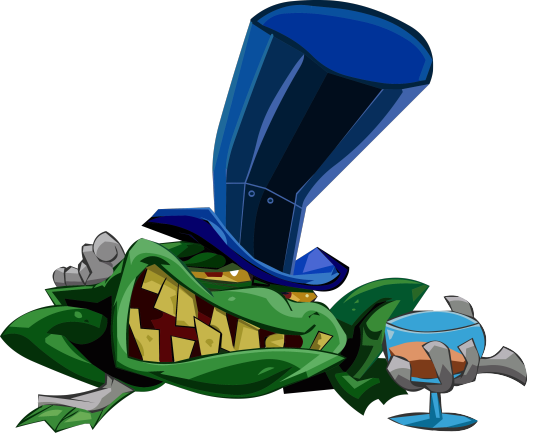
Raleigh was actually kinda difficult to pin down, as he is pretty much just a generic non-descript frog. Looking at a list of amphibians in the British Isles didn't exactly narrow it down, as the UK also has several non-native species of frogs with varying degrees of naturalization. Eventually I settled with the species that I thought best matched his colouration, the marsh frog (Pelophylax ridibundus)


At up to 4 inches long, the marsh frog is the largest and one of the most widespread frog-species native to Europe, although it isn't native to the UK, being introduced in the 1930's. Within the UK it is primarily found in south-eastern England. Researchers are still undecided as to wether or not it poses a threat to the local ecosystem.
True to their name, marsh frogs are generally found in marsh regions, being more tolerant of saltwater and pollution than other frog-species. Like most frogs they primarily feed on insects and other invertebrates, but thanks to their size they can also prey on smaller fish, birds, and rodents.
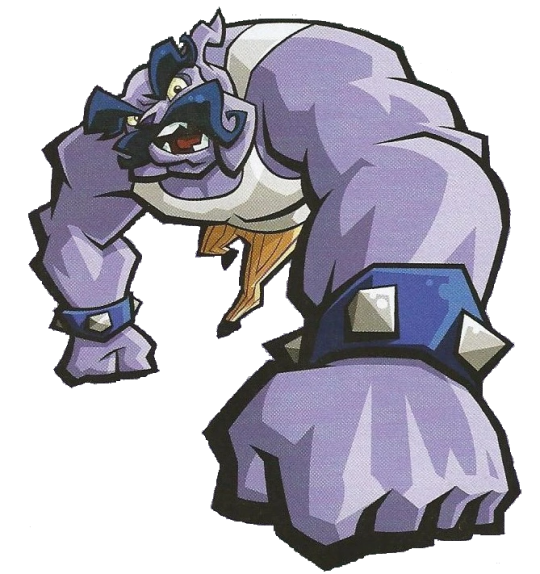

In contrast, Muggshot was fairly easy to figure out. He is unsurspirisngly an american bulldog, particularly of what is called the "bully"-type. Domestic breeds generally aren't my forté, but I'll do my best.
American bulldogs were originally an offshoot of the english bulldog, which were brought to America following the colonization, where they were primarily used as livestock guardians and catch dogs. The "bully"-type ( also known as the "Johnson" or "Classic"-type) was created by dog-breeder John D. Johnson in the mid 19th-century, by crossbreeding standard american bulldogs with an english bulldog, resulting in a line of dogs that are bigger, more muscular, and with a more pronounced underbite than the standard variation, all very reminiscent of Muggshot.
Primarily used as guard dogs nowadays, american bulldogs are considered to be a loyal and courageous breed with strong protective insitncts. They riquire rigourous training and exercise in order to stay healthy (and make sure they don't skip leg-day, like a certain someone)

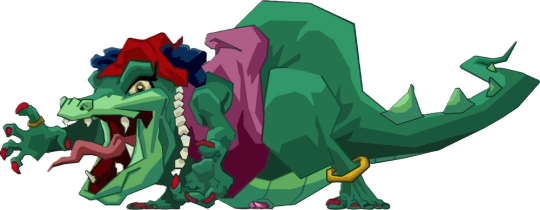
Mz. Ruby also proved to be alittle bit tricky. I had originally pinned her as an american crocodile (Crocodylus acutus) given that she lives in Haiti, where the only native crocodillian is the american crocodile. The Sly Cooper Wiki refers to her as an american alligator (Alligator missisipiensis), but there is nothing in-game that confirms this. However, i then realized that she is probably Cajun given her accent. The Cajun culture originates in Louisiana, where the only crocodilians are american alligators, so that kinda seals the deal.
You wouldn't really know that just by looking at her though. Alligators are distinquished by having short, broad snouts with an overbite. If we look at Mz. Ruby, while her her snout is kinda broad, she sure as hell doesn't have an overbite.
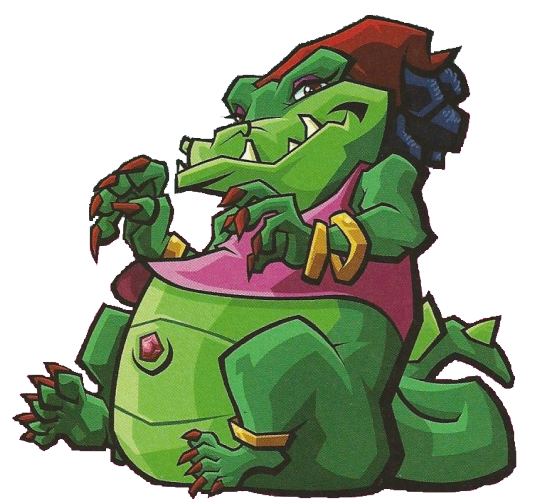
Petty taxonomy bullshit aside, american alligators are found throughout the swamps, rivers, and lakes of the south-eastern United States. They are the apex predators of their environment, and eat pretty much any animal they can get their jaws on. Although their range overlaps with that of the american crocodile in Florida, the two species generally don't compete over resources.
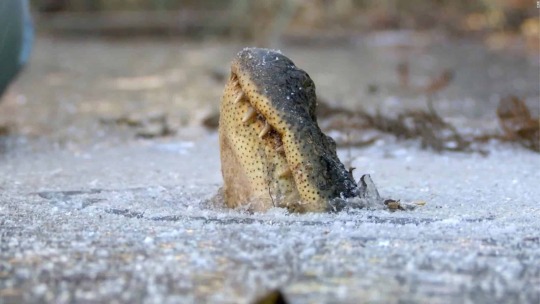
American alligators are some of the most cold-resistant reptiles, being able to survive temperatures as low as 40 degrees fahrenheit or 7 degrees celsius. Should the water they live in freeze over they can go into a kind of suspended animation, by digging a hole in the ice to breathe through, whilst lowering their metabolism and bodily functions to a minimum. Not quite the breaking of the laws of life and death that Mz. Ruby has got going on, but still pretty cool.
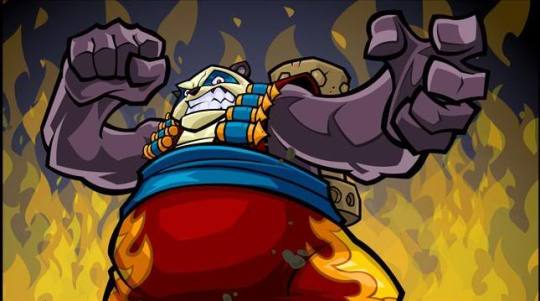

Moving unto the Panda King, and yeah... There is no getting around the fact that he is clearly meant to be a giant panda (Ailuropoda melanoleuca). I briefly toyed with the idea of him being one of the many extinct species of Ailuropoda, but that was too far-fetched.
Giant pandas are of course renowned for their cute appearance, strict bamboo diet, and for being the face of animal conservation. Though infamously endangered by habitat-loss in their native mountain range, they are considered less endangered nowadays, being given the IUCN-status of Vulnerable.
And no, pandas aren't an evolutionary dead-end or a lost cause in terms of conservation, and don't deserve to go extinct. Anyone who tells you otherwise likely doesn't understand ecology.
The giant panda is notable for having an extra long sesamoid bone on its front paws, in additon to its five fingers. While not a true finger, this bone practically works like an opposable thumb, which comes in handy when handling bamboo shoots (though it'll take some time before they master the art of pyrotechnics)
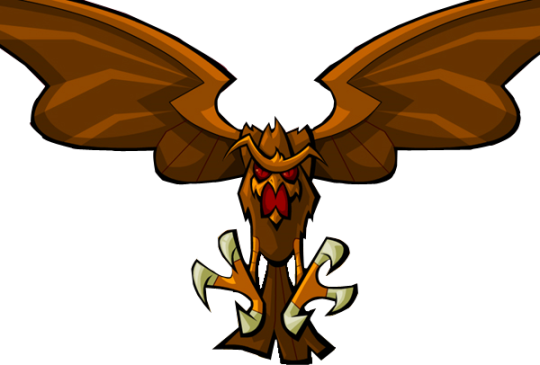

Finally we have Clockwerk, the immortal arch-nemesis of the Cooper Clan. His in-game description doesn't give us much to work with, other than that he is an owl of some kind. We do know that he apparently had an orange plumage before becoming a cyborg. Due to his large size and having a base in Russia, some people have identified him as a eurasian eagle-owl (Bubo bubo), which I can defintiely see.
I however subscribe to the theory that Clokcwerk was originally from Ancient Egypt, and thus like to think that he's a pharaoh eagle-owl (Bubo ascalaphus).

With a wingspan of about 3 feet, the pharaoh eagle-owl is actually one of the smaller members of its genus. It is found throughout Northern Africa along with parts of the Arabian Peninsula. It likes to nest around cliffs and river valleys, where it primarily feeds on rodents, reptiles, and other birds, but occasionally takes on prey as large as hares and desert foxes.
The ancient egyptians associated the owls with wisdom and knowledge, but also regarded them as symbols of mourning and death. Owls were sometimes mummified alongside humans, as it was believed that their night-vision would help guide the deceased through the darkness of the underworld.
15 notes
·
View notes